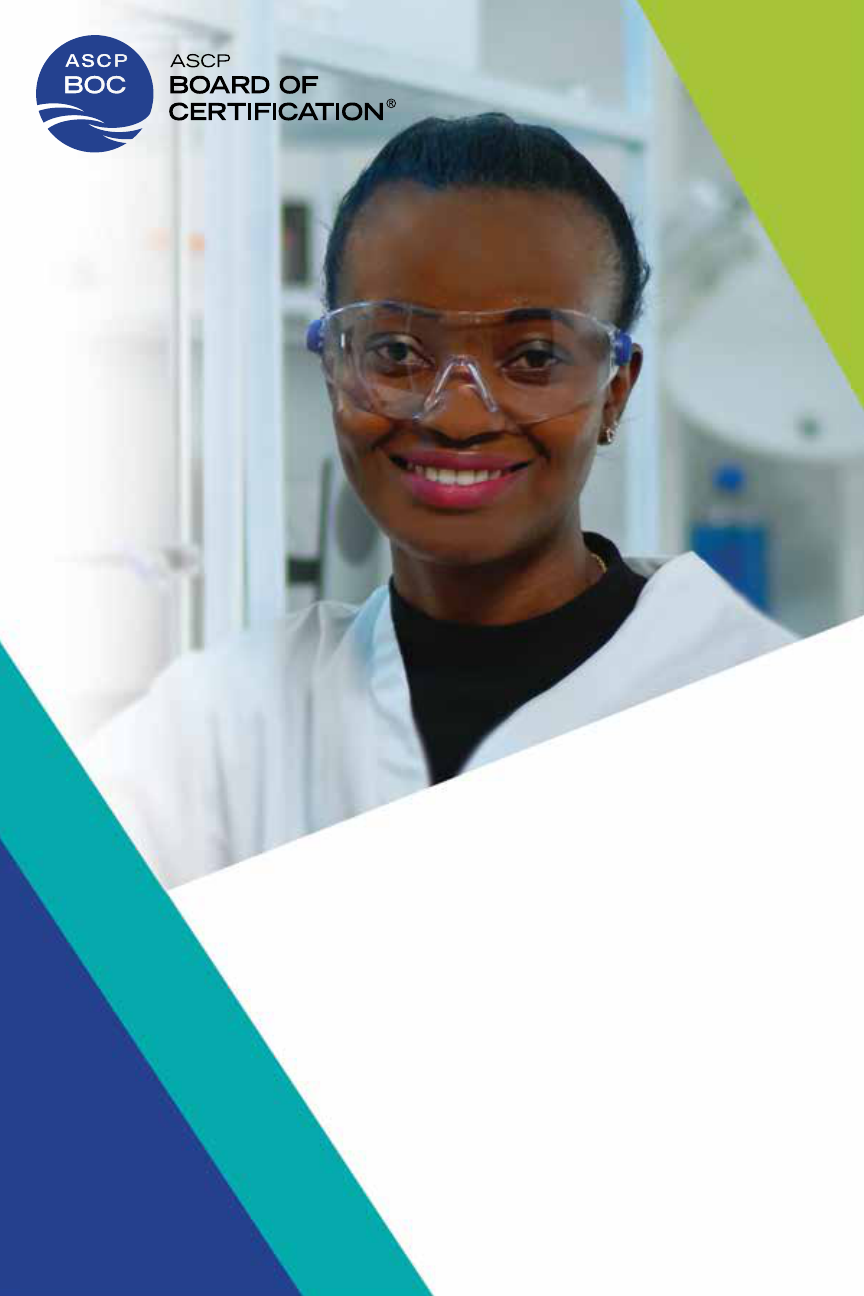
Revised February 2021
PROGRAM DIRECTOR’S
GUIDE TO
CERTIFICATION
www.ascp.org/boc

2
www.ascp.org/boc
PROGRAM DIRECTOR’S
GUIDE TO
CERTIFICATION

3
About the ASCP Board of Certication 4
ASCP BOC Credentials 5
Glossary 6
Get Started with the ASCP BOC 10
About the Examination 13
Examination Integrity 16
Before the Examination 17
Application Timeline 18
Ofcial Transcripts 21
Resources for Students 23
After the Examination 24
Resources for Program Directors 26
The Examination Eligibility Verication Report (EEV) 27
Program Performance Reports (PPR) 30
Maintaining Certication 35
Military Laboratory Training Programs 36
International Programs 37
Notes 38
Contact Us 39
Table of Contents
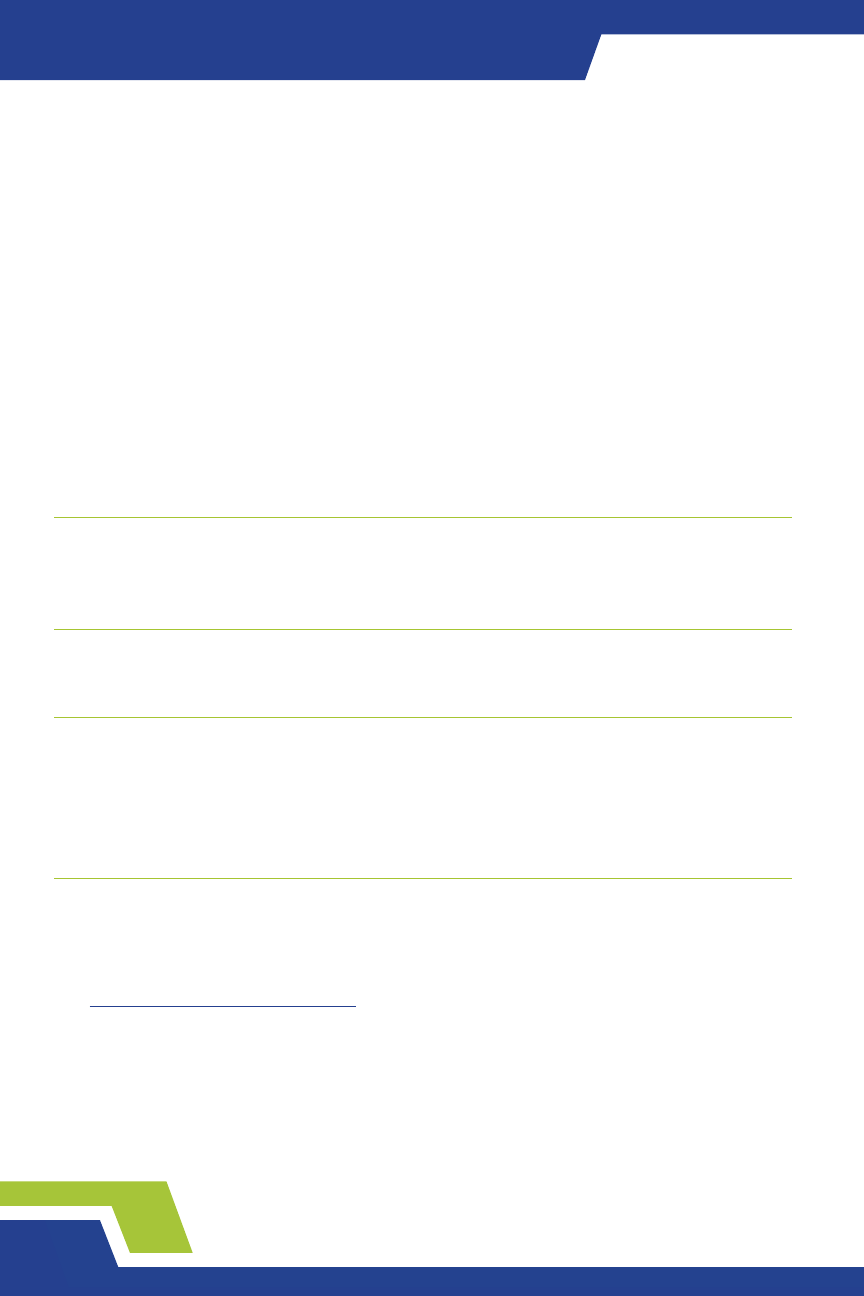
4
About the ASCP Board of Certication
The profession has come a long way since the American Society for Clinical
Pathology (ASCP) Board of Registry (BOR) was founded in 1928, when the primary
role of laboratory professionals was to act as laboratory assistants for pathologists.
In 2009, the ASCP Board of Registry (BOR) and the National Credentialing Agency
for Laboratory Personnel (NCA) formed the ASCP Board of Certication (BOC), a
single certication agency for medical laboratory professionals.
Today, laboratory professionals are everywhere, working in many dierent
environments and playing many roles, from generalist to specialist to diplomates
in laboratory management. The ASCP BOC is the recognized leader in certication
of medical laboratory professionals with a formal certication process that requires
education, clinical training, and/or experience, and successful completion of the
certication examination.
ASCP BOC MISSION
The mission of the ASCP Board of Certication (BOC) is to provide excellence in certication
of laboratory professionals on behalf of patients worldwide.
ASCP BOC VISION STATEMENT
To be the gold standard in global certication for all laboratory professionals.
ANSI ACCREDITATION
The ASCP BOC is accredited by the American National Standards Institute (ANSI). ANSI
awards accreditation to personnel certication agencies that meet the International
ISO Standard 17024. The ASCP Board of Certication is the only medical laboratory
certication agency awarded accreditation by ANSI.
ABOUT THE ASCP BOC
While maintaining a corporate relationship with ASCP for scal and operational purposes, the
ASCP BOC has autonomy in all governance and credentialing-related activities. The ASCP
BOC manages conict of interest and ensures objectivity by representative membership on
its Board of Governors from other associations and societies.
See www.ascp.org/boc/governance for further information.
The ASCP BOC is not a membership organization and successful certication, qualication,
and/or credential maintenance by the ASCP BOC does not grant or require membership
in any professional organization. The ASCP Board of Certication does not discriminate
among applicants as to age, gender, race, religion, national origin, disability, marital status,
or sexual orientation.
For additional information about the ASCP BOC, including an in-depth
history and the ASCP BOC Values and Commitments, visit www.ascp.
org/boc/about-the-boc.
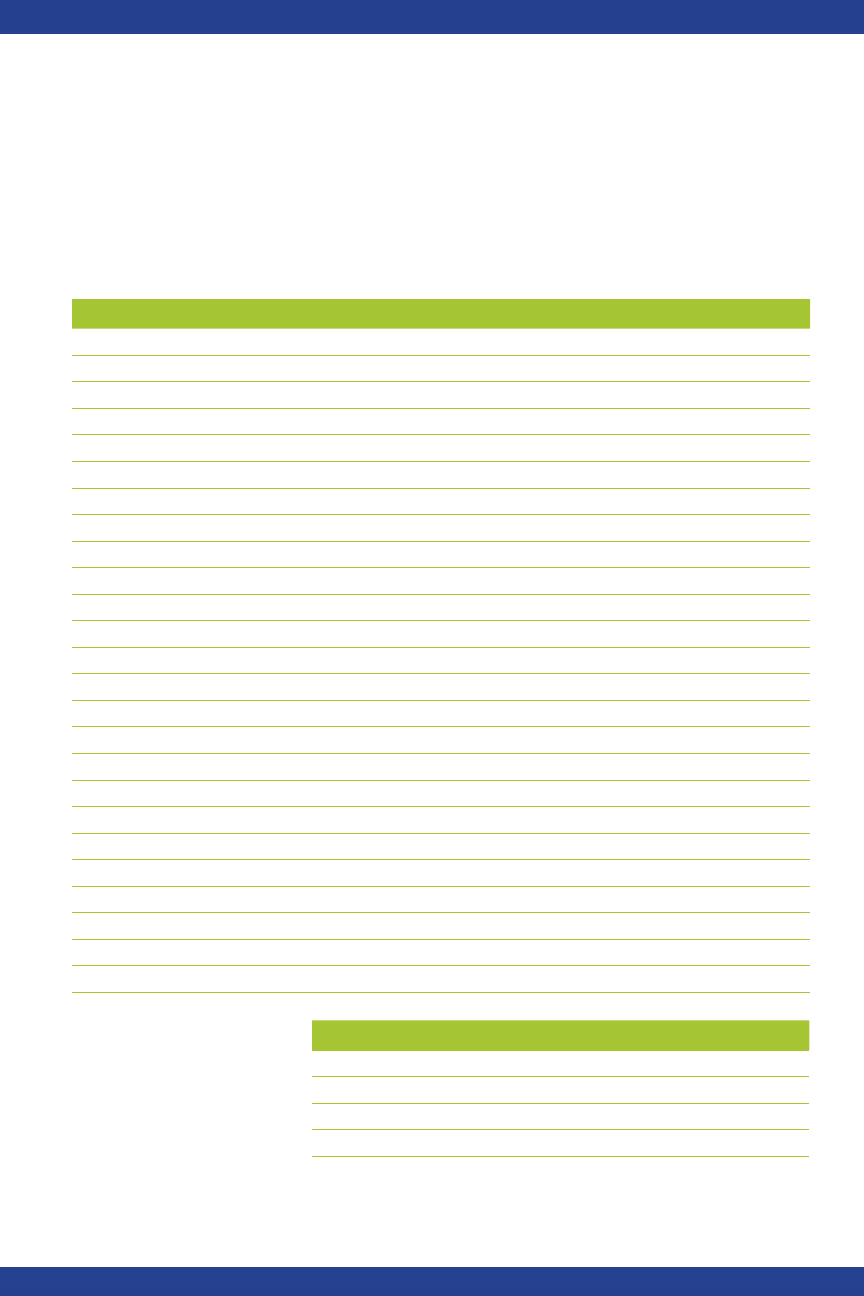
5
www.ascp.org/boc
CERTIFICATION U.S. CREDENTIAL INTERNATIONAL CREDENTIAL
Medical Laboratory Scientist MLS(ASCP) MLS(ASCP
i
)
Medical Laboratory Technician MLT(ASCP) MLT(ASCP
i
)
Medical Laboratory Assistant MLA(ASCP) —
Phlebotomy Technician PBT(ASCP) PBT(ASCP
i
)
Donor Phlebotomy Technician DPT(ASCP) —
Histotechnician HT(ASCP) HT(ASCP
i
)
Histotechnologist HTL(ASCP) HTL(ASCP
i
)
Technologist in Blood Banking BB(ASCP) BB(ASCP
i
)
Specialist in Blood Banking SBB(ASCP) SBB(ASCP
i
)
Technologist in Chemistry C(ASCP) C(ASCP
i
)
Specialist in Chemistry SC(ASCP) SC(ASCP
i
)
Technologist in Cytogenetics CG(ASCP) CG(ASCP
i
)
Cytotechnologist CT(ASCP) CT(ASCP
i
)
Technologist in Gynecologic Cytology — CTgyn(ASCP
i
)
Specialist in Cytotechnology SCT(ASCP) SCT(ASCP
i
)
Technologist in Hematology H(ASCP) H(ASCP
i
)
Specialist in Hematology SH(ASCP) SH(ASCP
i
)
Technologist in Microbiology M(ASCP) M(ASCP
i
)
Specialist in Microbiology SM(ASCP) SM(ASCP
i
)
Technologist in Molecular Biology MB(ASCP) MB(ASCP
i
)
Specialist in Molecular Biology SMB(ASCP) SMB(ASCP
i
)
Specialist in Cytometry SCYM(ASCP) SCYM(ASCP
i
)
Diplomate in Laboratory Management DLM(ASCP) —
Pathologists’ Assistant PA(ASCP) —
Cientico de Laboratorio Medico en espanol — CLM(ASCP
i
)
QUALIFICATION CREDENTIAL
Qualication in Biorepository Science QBRS
Qualication in Apheresis QIA
Qualication in Immunohistochemistry QIHC
Qualication in Laboratory Safety QLS
ASCP BOC Credentials
To date, more than 590,000 individuals from 100 countries have earned certication from the
ASCP BOC. The ASCP BOC offers certication for those living and working around the world.
ASCP BOC certication is recognized as the gold standard of excellence for laboratory
professionals world-wide. Following are the certications and qualications that are
currently available from the ASCP BOC:
In addition, the ASCP
BOC offers qualications
in several technical areas.
For complete information, including eligibility requirements for each category, please visit:
www.ascp.org/certication.
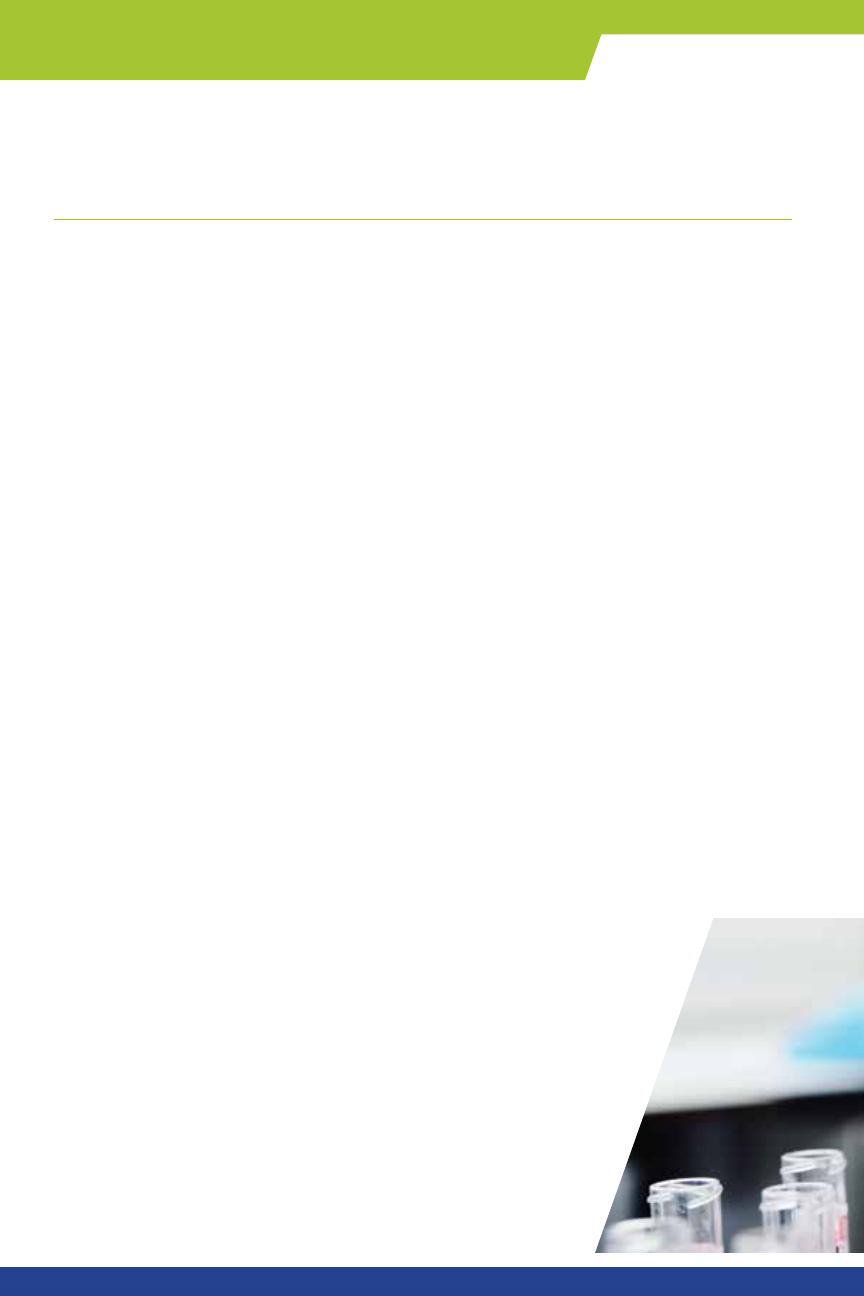
6
www.ascp.org/boc
Here are some key terms, with denitions and explanations, that may be of use to
Program Directors.
ACCREDITATION
A process of external review to assess the quality of institutions, programs, and services
and to assure that established standards are met. ASCP BOC eligibility requirements specify
completion of an accredited program for a number of certication categories. Please note
that the ASCP BOC does not accredit or approve educational programs.
There are three agencies recognized by the ASCP BOC for accreditation of educational
programs in the medical laboratory sciences:
THE NATIONAL ACCREDITING AGENCY FOR CLINICAL LABORATORY SCIENCES (NAACLS)
is the recognized accreditation agency for the following programs:
• Medical Laboratory Scientist
• Medical Laboratory Technician
• Histotechnician/Histotechnologist
• Cytogenetics
• Diagnostic Molecular Science – can be eligible for the Technologist and/or Specialist
in Molecular Biology certication exams
• Pathologists’ Assistant
NAACLS also approves education programs in the following categories:
• Phlebotomy
• Clinical Assistant – can be eligible for the Medical Laboratory Assistant certication exam
THE COMMISSION ON ACCREDITATION OF ALLIED HEALTH EDUCATION PROGRAMS (CAAHEP)
is the recognized agency for accreditation of the following programs:
• Cytotechnologist
• Specialist in Blood Banking
THE ACCREDITING BUREAU OF HEALTH EDUCATION SCHOOLS (ABHES)
is a recognized agency for accreditation of the following program:
• Medical Laboratory Technician
Glossary
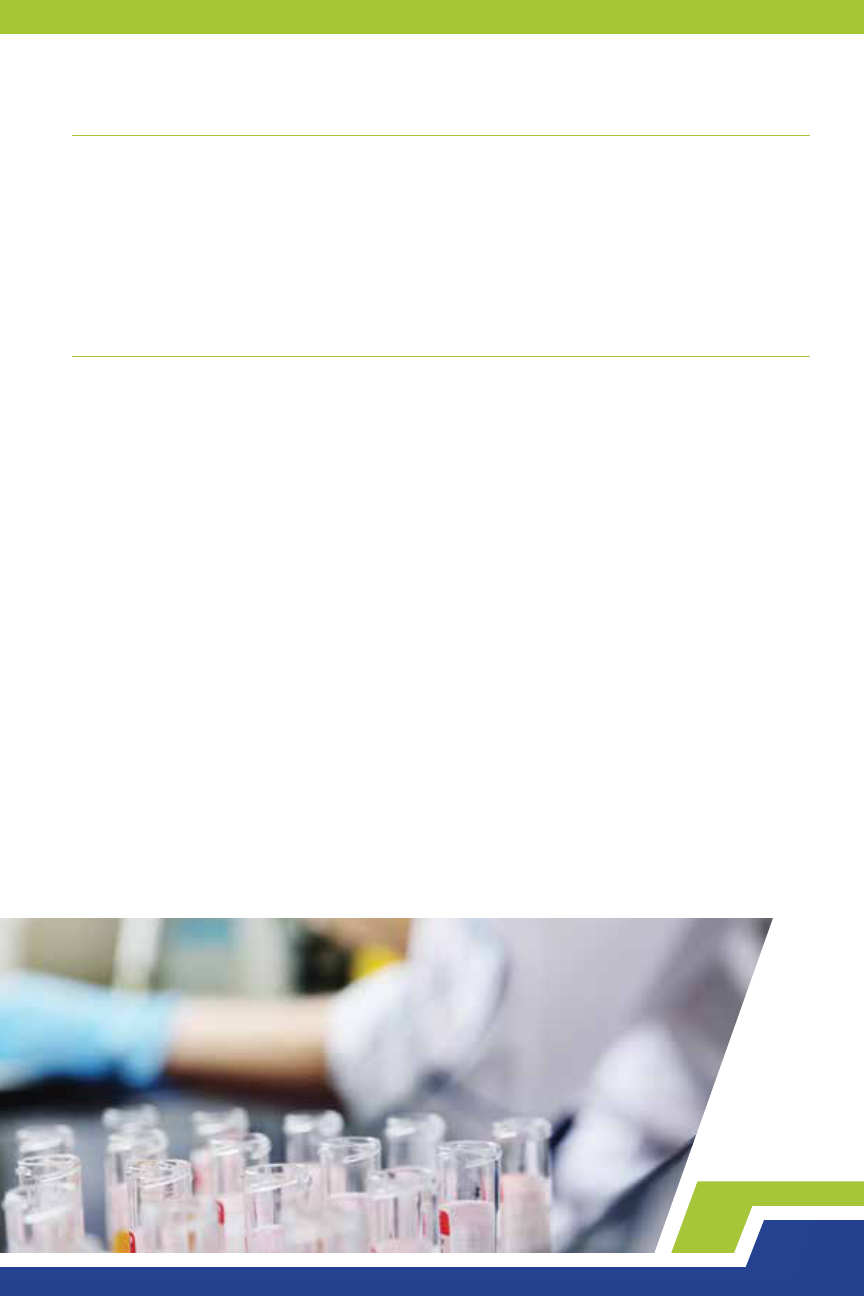
7
CERTIFICATION
The process by which a nongovernmental agency or association recognizes the
competence of an individual who has met predetermined qualications.
Certication by the ASCP BOC conrms that an individual has demonstrated that they
possess the essential knowledge and skills necessary for competent practice within
a particular eld of the medical laboratory. Visit www.ascp.org/boc/certication for
complete information.
LICENSURE
A process enacted by law and regulated by state, federal, or other governmental bodies that
may cover institutions, programs, services, or individuals. ASCP BOC credentials are accepted
for state licensure, provided the individual meets all other licensure requirements. You can nd
more information about states with licensure requirements at www.ascp.org/boc/licensure.
Students wishing to work in CA and NY should make sure to review the state licensure
requirements carefully, as well as the ASCP BOC eligibility requirements.
• If students meet the CA/NY state licensure requirements and ASCP BOC eligibility
requirements, they should apply for certication; once certied they can order a
verication of certication to be sent to their state licensing board.
• If students do not meet ASCP BOC eligibility requirements but do meet those of CA/NY,
they should apply for the licensure only examination.
Successful certication by the ASCP BOC does not automatically grant an individual a
state license.

8
Glossary
OTHER IMPORTANT ASCP BOC TERMINOLOGY
VERIFICATION OF CERTIFICATION
Primary source verication of ASCP credentials may be purchased online through the
ASCP BOC website. See complete information at www.ascp.org/boc/verify-credential.
CREDENTIAL MAINTENANCE PROGRAM (CMP)
Laboratory professionals who are ASCP certied beginning January 2004 or later are required
to complete the Credential Maintenance Program (CMP) every three years to maintain valid
certication. See page 35 for further information, or visit www.ascp.org/cmp.
EXAM ELIGIBILITY VERIFICATION (EEV)
The Exam Eligibility Verication Report (EEV) is a tool for Program Directors of NAACLS, CAAHEP,
and ABHES accredited/approved programs. The EEV provides a listing of students who are
awaiting verication of completion of your program. See pages 27-29 for complete information,
or visit www.ascp.org/boc/pd/eev.
PROGRAM PERFORMANCE REPORT (PPR)
The Program Performance Report (PPR) is an optional paid service that allows you to view
your students’ certication examination scores. Scores will appear on the report 10 business
days after your student’s examination date. See pages 30-34 for complete information, or
visit www.ascp.org/boc/pd/ppr.
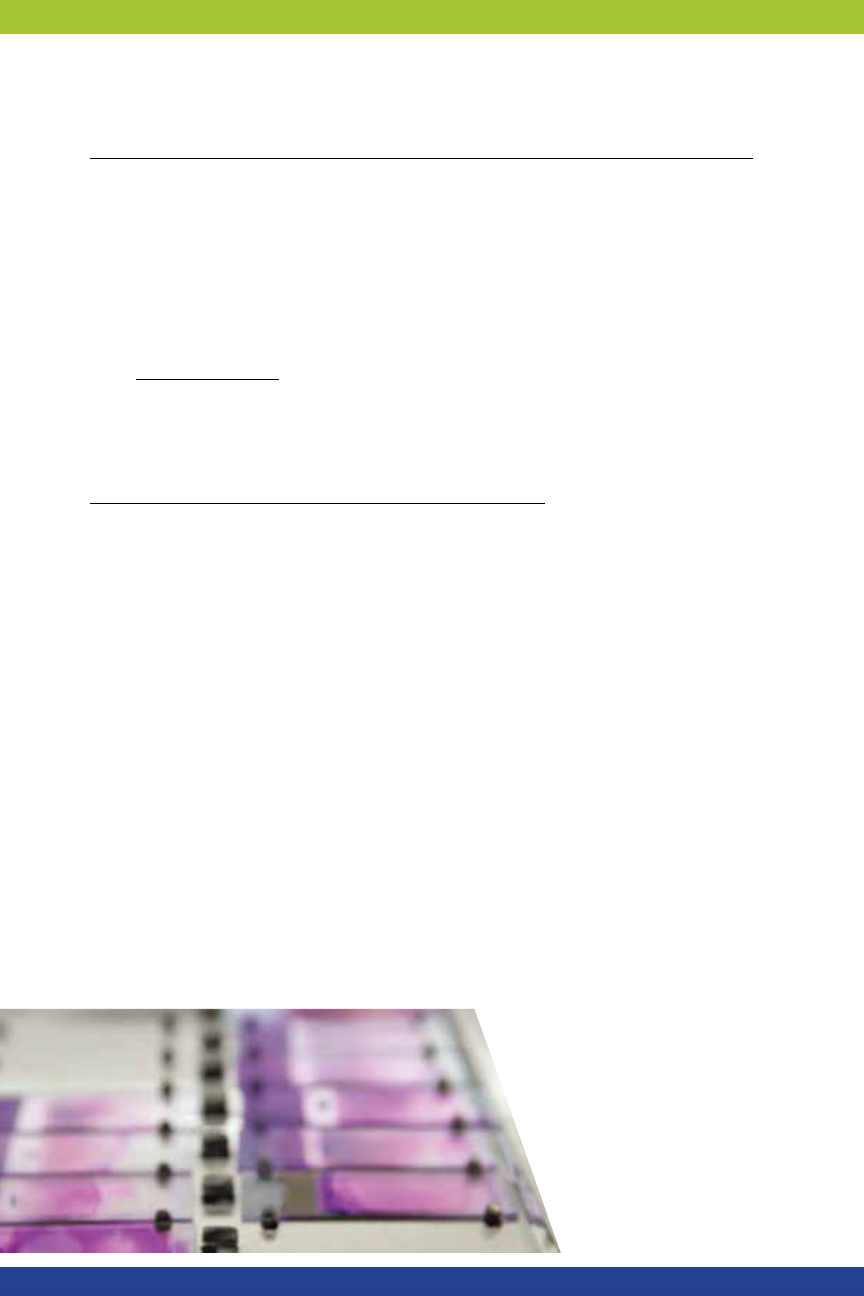
9
www.ascp.org/boc
STRUCTURED PROGRAMS:
• Categorical Programs in Blood Banking, Chemistry, Hematology, and Microbiology
Some NAACLS accredited Medical Laboratory Scientist (MLS) programs offer structured
categorical programs in blood banking, chemistry, hematology, and/or microbiology, in
addition to the traditional, complete MLS program. Individuals who complete structured
training programs in a single area under the auspices of a NAACLS accredited MLS program,
with the requisite education, qualify for the technologist examination (BB, C, H, or M) under
Route 3. For complete eligibility requirements, visit www.ascp.org/boc/us-certications.
To ensure that graduating students qualify for ASCP categorical certification under
Route 3, these structured programs are required to follow specific guidelines. Contact
us at [email protected] for more information.
Students enrolled in NAACLS accredited MLS programs who fail to complete the MLS
program for any reason are not qualied to apply for a categorical certication under
Route 3, which is specically designed for students in structured categorical programs.
• Phlebotomy and Medical Laboratory Assistant Programs
If your program is a formal structured phlebotomy or medial laboratory assistant training
program that is not approved by NAACLS, you must submit documentation forms to verify
your students’ training. Completed documentation forms and letters of authenticity should
be submitted to the ASCP BOC within a week of the students’ application in order to avoid
delays. Documentation forms can be found at www.ascp.org/boc/pbt
or www.ascp.org/boc/mla.
At this time, all documentation is requested to be sent electronically. Please click here to
see the ASCP BOC COVID-19 page for complete information.
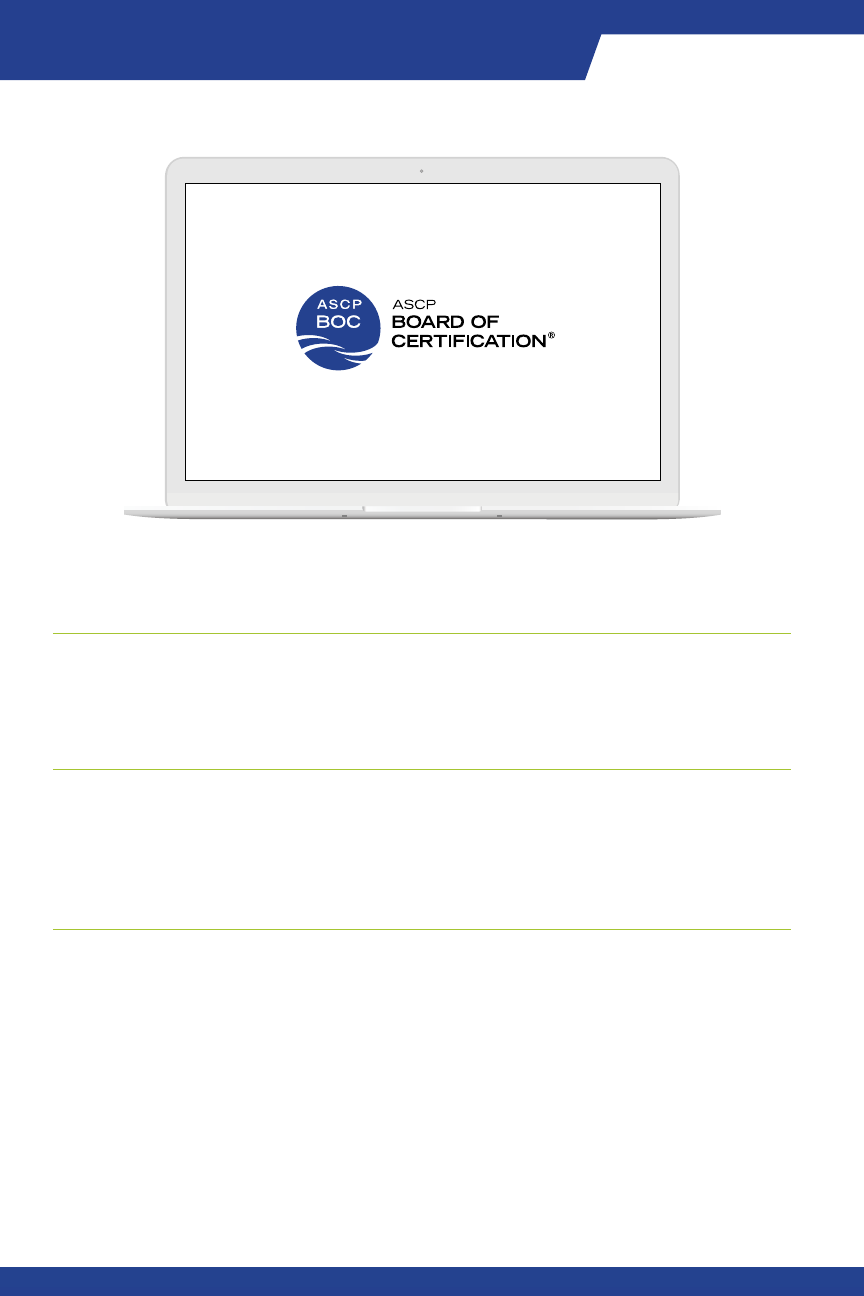
10
www.ascp.org/boc
Get Started with the ASCP BOC
APPLY FOR ACCREDITATION AND/OR APPROVAL
If your program is new, you’ll need to apply for accreditation and/or approval by NAACLS,
CAAHEP, or ABHES by submitting a formal application and fee to the appropriate
accreditation agency.
NAACLS ACCREDITATION AND/OR APPROVAL
When you have applied for accreditation/approval from NAACLS and program ofcials have
submitted the formal application form, fee, and the Self-Study, upon review by NAACLS
your program is granted Serious Applicant Status. NAACLS will notify the ASCP BOC once
a program reaches Serious Applicant Status.
CAAHEP ACCREDITATION
Once a program has successfully completed a CAAHEP Request for Accreditation
Services Form, a self-study document, and an on-site review, your program is granted
Initial Accreditation Status. CAAHEP will notify the ASCP BOC once a program has
reached Initial Accreditation Status.
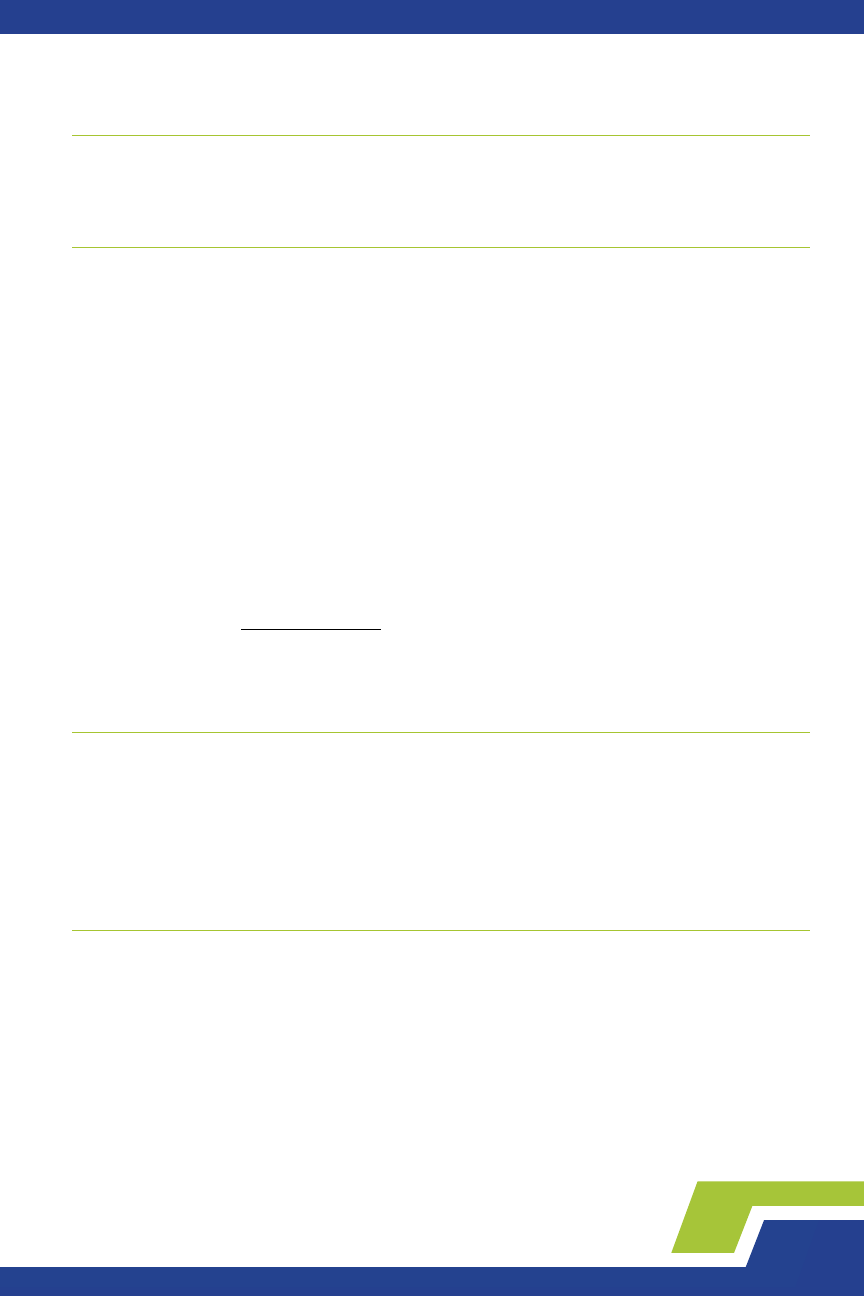
11
ABHES ACCREDITATION
Successful completion of the accreditation process is required. ABHES will notify the ASCP
BOC once a program has been accredited.
GET YOUR ASCP BOC SCHOOL CODE
While you’re going through the accreditation and/or approval process, and once you have
accepted your rst class of students, you will need to obtain a school code number from
the ASCP BOC. Please note that only students who complete your program after your
program has met the above requirements are eligible to sit for the ASCP BOC exam under
the program route.
(For example, if your program is granted Serious Applicant Status in March, students who complete your program
in June are able to apply under the accredited program route but students who completed your program in
February are not.)
Once the ASCP BOC has received ofcial notication from the accreditation agency of your
program’s status, the ASCP BOC will assign your program a school code. The school code
number is for your reference. This information can also be found at www.ascp.org/boc/pd/
accreditation-agencies.
All accredited/approved programs will appear on the institution lookup feature of the
online application. If your program’s name is not appearing on the drop-down menu,
please contact us at [email protected] for further instructions. Students must choose
your program while applying to ensure that they will appear on your Examination Eligibility
Verication (EEV) and Program Performance Reports (PPR).
ASCP ACCOUNT
If you do not already have one, an ASCP account will be created for you when your program
receives a school code. You will need to log in to your personal ASCP account to access the
EEV and PPR. See pages 27 - 34 for complete information on the EEV and PPR.
To log in to your account, go to www.ascp.org/login. If you have forgotten your password or
login information, choose “Forgot Username / Password” and follow the instructions provided.
JOIN THE ASCP BOC PROGRAM DIRECTOR’S FACEBOOK GROUP
The ASCP BOC Program Directors Facebook group is a group for directors of NAACLS,
CAAHEP, and ABHES accredited or approved laboratory programs, as well as education
and clinical coordinators and faculty, whose students seek ASCP certication. This peer-
based group can answer any of your certication-related questions. Supported by volunteers
with several years of program experience, the group aims to become the program director’s
resource for information and support. Join now!
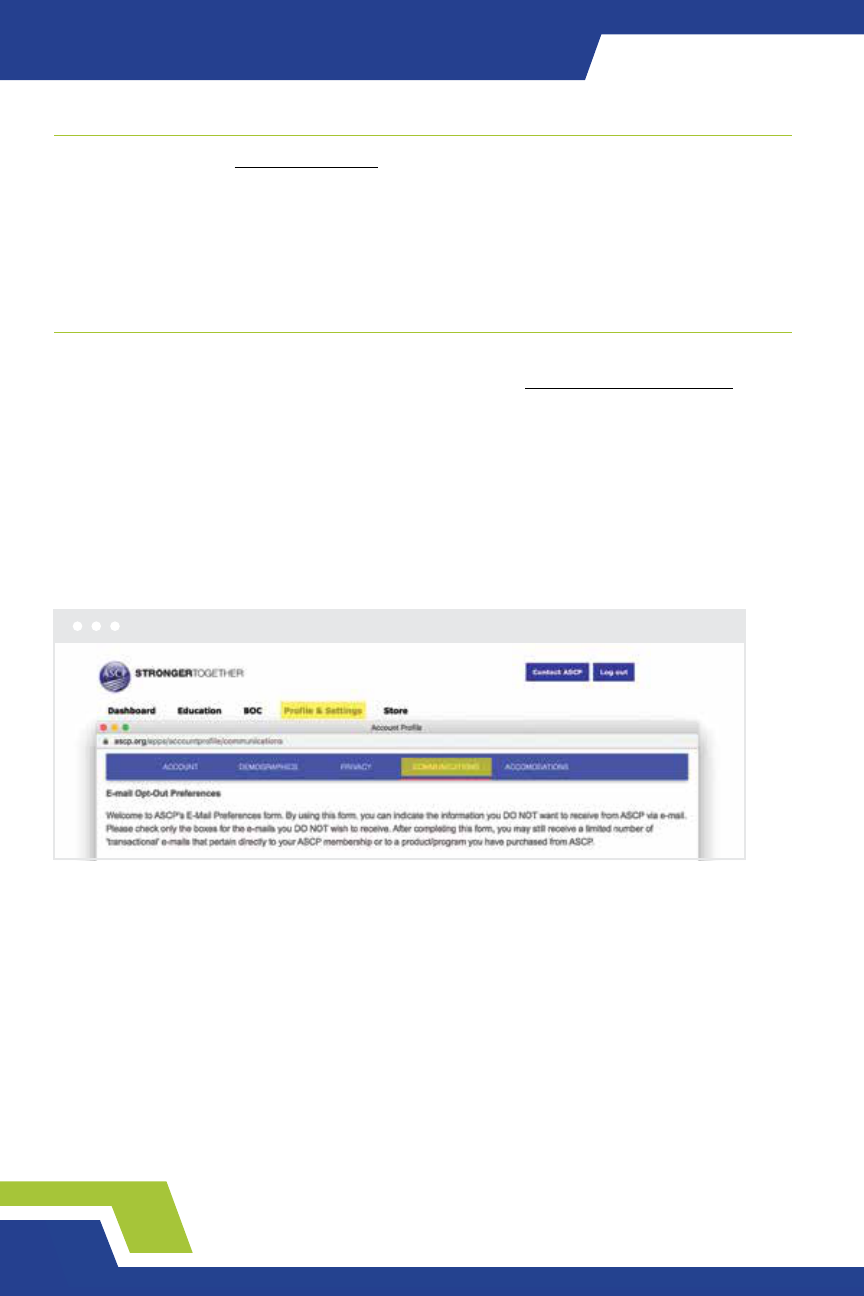
12
PROGRAM INFORMATION
Make sure to contact [email protected] to notify the ASCP BOC of any changes to your
program including:
• Program Director information
• Program address
• Program status
COMMUNICATION
Ensure that you will receive all necessary ASCP BOC related emails, such as emails regarding
the EEV, PPR, and eLinks for Program Directors, by adding [email protected] to
your “safe” email list.
Also make sure that you have opted in to to receiving important emails. Log in to your ASCP
account and choose “Prole and Settings.” From there, choose “Communications” to review
your preferences.
Please make sure that the “Board of Certication” and “ASCP Surveys” are not checked.
This will ensure that you receive emails from the ASCP BOC as well as surveys used to
gather information and feedback on improving the laboratory profession.
Get Started with the ASCP BOC

13
www.ascp.org/boc
The purpose of a certification examination is to ensure minimum competency
of an individual to perform their job safely and thereby protect the public. A
certification provides a determination that an acceptable level of competence
has been achieved by an individual who possesses the minimum qualifications
to be eligible to sit for the certification examination.
CERTIFICATION EXAM COMMITTEES & QUALIFICATION WORK GROUPS
ASCP BOC certication examination committees and qualication work groups are made
of up more than 100 volunteer technologists, technicians, phlebotomists, laboratory
scientists, educators, supervisors, pathologists, and professional researchers. These
volunteers are selected to represent diversity in job type, geographic location, facility type,
and amount and level of experience. This diversity provides a broad spectrum of subject
matter expertise and knowledge of current practice in the profession across the country.
An ASCP BOC certication examination committee’s primary responsibility is to validate the
content of the certication examination. They are responsible for the planning, development,
and review of the examination databases, setting the standards for each exam, and
performing job or practice analyses. Much time and energy goes into reviewing current exam
items for accuracy and relevancy, reviewing psychometric and statistical analysis of the exam
items/database, and writing new exam items. The committees meet face-to-face annually
and by conference call as needed to complete these tasks.
For additional information, and to submit a volunteer application, visit www.ascp.org/boc/
exam-cmtes.
PRACTICE ANALYSES
The purpose of conducting a practice analysis is to define practice in a profession.
Practice analysis surveys define the actual tasks that individuals must be able to perform
at the time of certification, for entry-level practice. The practice analysis provides the
foundation for the certification examination. It also ensures the certification is fair, job
related, and legally defensible. The practice analysis provides evidence of content
validation and is required by psychometric research (i.e., AERA) and is considered best
practices for high stakes examination development. In addition, professional standards
used by accrediting bodies (i.e. ANSI), as well as legal statues and guidelines, utilize the
practice analysis to evaluate the validity of certification programs.
The practice analysis process begins with the development of a comprehensive list of tasks
needed for current practice in the eld by subject matter experts. This list is placed into
survey format along with a rating scale and demographic questions. The practice analysis
survey is then distributed to practitioners. The data is analyzed and the exam committee
reviews the data to determine which tasks will be included when developing the content
guideline and subsequently the examination database. All exam items are linked to a content
area on the content outline.
Current ASCP BOC Practice Analysis Reports are available online.
About the Examination

14
www.ascp.org/boc
CONTENT GUIDELINES
A content guideline is provided for each examination category at www.ascp.org/certication.
Each content guideline provides an overview of the content areas with an exam percentage for
each. Following this is a more specic overview of the content for each examination category.
All exams consist of questions at three taxonomy levels: 1) recall, 2) interpretation, and
3) problem-solving. Exam items are related to the subtest areas outlined on the examination
content outline and may be both theoretical and/or procedural.
THE EXAMINATION
All ASCP BOC exams contain multiple-choice questions with one best answer. Most*
certication examinations are composed of 100 questions given in a 2 ½ hour time frame.
Once an exam is completed, and if there is time remaining, examinees may review and
change their answers.
All of the certication examinations contain experimental or eld test questions. These
questions are not used to calculate the examinee’s examination score. This is a common
practice in national examination programs and is necessary to test new questions and to
ensure the validity of the examination. The time allotted for testing includes adequate time
to complete the examination questions as well as the eld test questions. Visit www.ascp.
org/boc/the-exam.
*The Phlebotomy Technician Examination contains 80 questions given in a 2-hour timeframe while the
Donor Phlebotomy Technician examination contains 90 questions and is given in a 2 ½ hour time frame.
About the Examination

15
COMPUTER ADAPTIVE TESTING (CAT)
The ASCP BOC uses criterion-referenced computer adaptive testing (CAT) for certication
examinations. CAT is used because it measures knowledge and skills more accurately
and quickly than standard xed form tests. With CAT, when a person answers a question
correctly, the next test question has a slightly higher level of difculty. The difculty level of
the questions presented to the examinee continues to increase until a question is answered
incorrectly. Then a slightly easier question is presented. In this way, the test is tailored to
the individual’s ability level. This is ideal for certication or licensure examinations, where
the ability level (minimally competent) is already established.
Test takers cannot skip a question because the CAT algorithm measures the individual’s
ability level each time a question is answered. Since each examination adjusts to meet the
test taker’s knowledge level, every exam is unique.
Each question in the test bank is calibrated for level of difculty and is classied by
content area. The content area aligns with the examination specic content outline; each
exam administers questions according to the percentages from this content outline. The
questions are not administered in groups, but are administered based on item difculty,
could be from any of the content areas, and follow the exam content percentages. In
other words, an examinee taking the MLS exam could start with a microbiology question,
followed by a chemistry question, followed by a hematology question, and so on until the
end of the exam.
The examinee must answer enough questions correctly to achieve a measure above the
pass point in order to successfully pass the certication examination. There is no set
number of questions one must answer to pass, nor is there a set percentage one must
achieve to pass. If, at the end of the exam, the examinee’s score is above the pass point,
then he or she passes the exam.
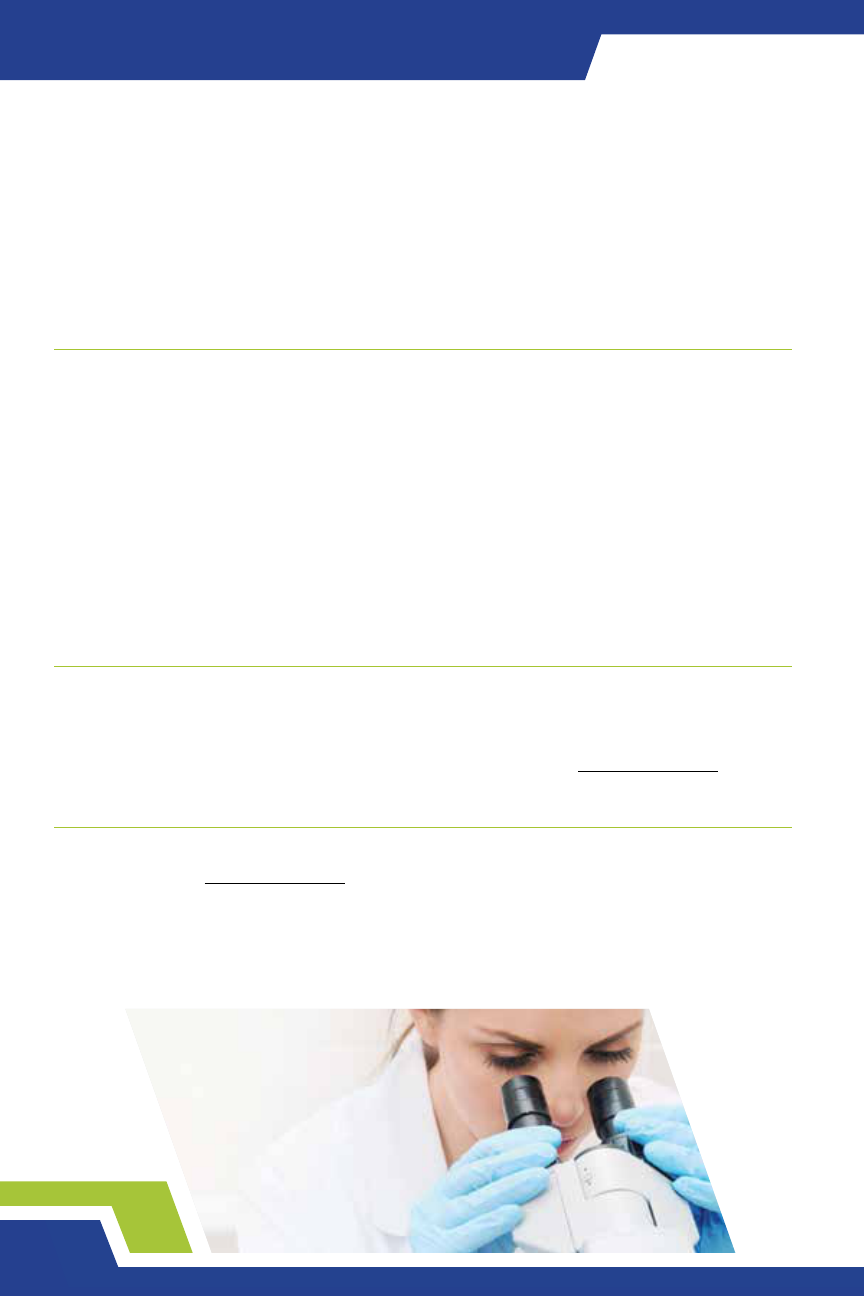
16
Examination Integrity
When your students apply for certication, they agree to a legal statement stating,
in part:
“I understand that this examination and all test questions are the exclusive
property of the Board of Certication and are protected by copyright law. Because
of the condential nature of these copyright materials, I agree not to retain, copy,
disclose or reveal any part of these examination materials . . .”
COPYRIGHT
ASCP Board of Certication examinations are protected by copyright law. The ASCP BOC
monitors the web and social media sites regularly for individuals or groups who claim
to have questions from ASCP BOC examinations. These are sometimes called recalls,
remembrances, or brain dumps. Specic exam information should not be shared with
anyone including peers, instructors, and future applicants.
Be aware that students who contribute to social media sites or in any way reveal specic
information from the examination, such as recalling examination questions and/or answer
choices, are committing copyright infringement. If ASCP certicants are found to be in
violation, their certication may be revoked. All individuals found to be in violation will be
barred permanently from taking any ASCP BOC examination.
EXAMINATION INTEGRITY PLEDGES
Please remind your students not to share information from the examination with anyone.
Several program directors have instituted Integrity Pledges that students from their
programs are required to sign which explicitly state that sharing of exam content is an
ethical violation. For further information, or for an example, email [email protected].
CONTACT THE ASCP BOC
If you or your students are aware of sites claiming to have ASCP BOC exam content,
please email us at [email protected].
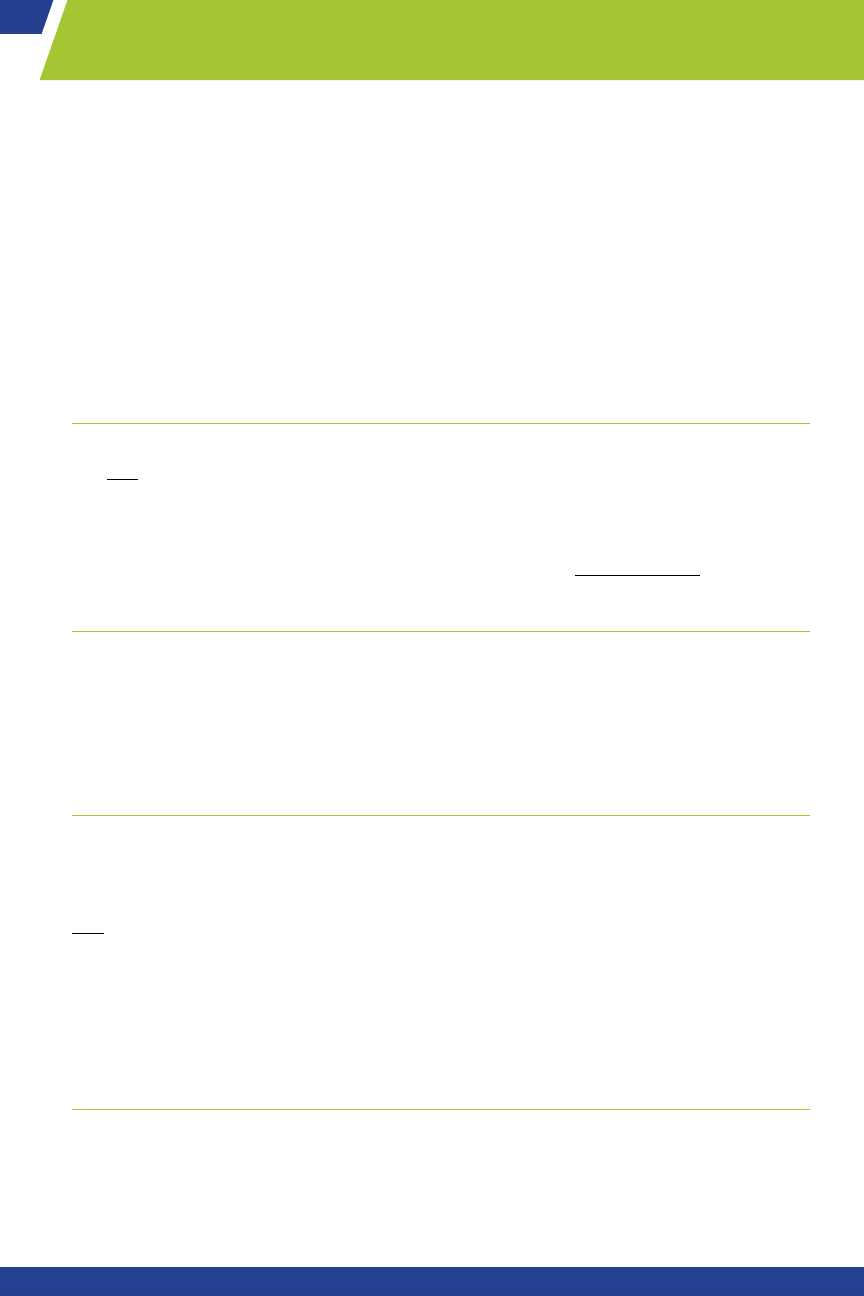
17
www.ascp.org/boc
Applicants can take ASCP BOC certication examinations at their choice of more
than 275 Pearson Professional Center locations across the country – and many
more around the world – all year.
Military personnel and their families may take their examinations at a military base.
See page 36 for more information.
Students are responsible for reading all eligibility requirements, application
procedures, and information for completing the certication process before submitting
an application. All information can be found at www.ascp.org/certication.
ELIGIBILITY FOR THE EXAMINATION
To be eligible to take the ASCP BOC examination, students must complete your program
and ALL degree requirements, even if a missing course is not related to the laboratory
training program. Students who have not completed all requirements for their degrees
are not eligible to sit for the examination. Encourage your students to verify with the
Registrar’s ofce that they have completed all of their courses for graduation before they
submit an application to the ASCP BOC as application fees are non-refundable.
STUDENTS WITH DISABILITIES
A student who wishes to request modifications in the examination environment because
of a disability must notify the ASCP BOC in writing before submitting an application
and provide a letter of diagnosis from an appropriate professional specifying the needed
modification. This request for modifications must come from the applicant themselves,
not a third party. For further information, see www.ascp.org/boc/ada.
ASCP ACCOUNT
Students must have a personal ASCP account (ASCP Customer ID) in order to apply
for an ASCP BOC examination. They should not create a duplicate account. Login at
www.ascp.org/login.
ALL communication from the ASCP BOC will be sent to the student’s email address
that they verify when starting their application. Students are responsible for reading all
communications from the ASCP BOC and ensuring the ASCP BOC has a current email
address on le. When logged in to their ASCP account, after an application has been
submitted, students will see a “BOC Activities” card where information can be found
regarding their application status.
WHEN TO APPLY
Students should not submit an online application more than six weeks prior to the date
of program completion. For example, if a student will complete your program at the end
of May they should submit an application no earlier than the middle of April. See the
Application Timeline on the next page for additional information.
Before the Examination

18
www.ascp.org/boc
Before the Examination
STUDENT SCHEDULES EXAM
STUDENT’S SCORES APPEAR ON YOUR PPR
10 business days after the student sits for the exam
Application Timeline
Students should submit an application six weeks before program completion or later.
STUDENT COMPLETES ONLINE APPLICATION
» Once payment is submitted, evaluators have up to 60 business
days to process an application
STUDENT APPEARS ON EEV
within 24 hours of application being fully processed
EVALUATOR PROCESS APPLICATIONS
as they are received
PROGRAM DIRECTOR VERIFIES PROGRAM COMPLETION ON THE EEV
» Make sure you are certain that the student will successfully complete ALL
components of the program by the date indicated (including nals, clinicals, etc.)
before verifying program completion. For complete information, see pages 27 - 29.
STUDENT RECEIVES EMAIL TO LOG IN TO THEIR ASCP ACCOUNT
within two business days of EEV sign off. They can access their Admission
Notication which includes:
» The eligibility window in which to schedule and take their exam
» Instructions for how to schedule their exam at a Pearson VUE testing location
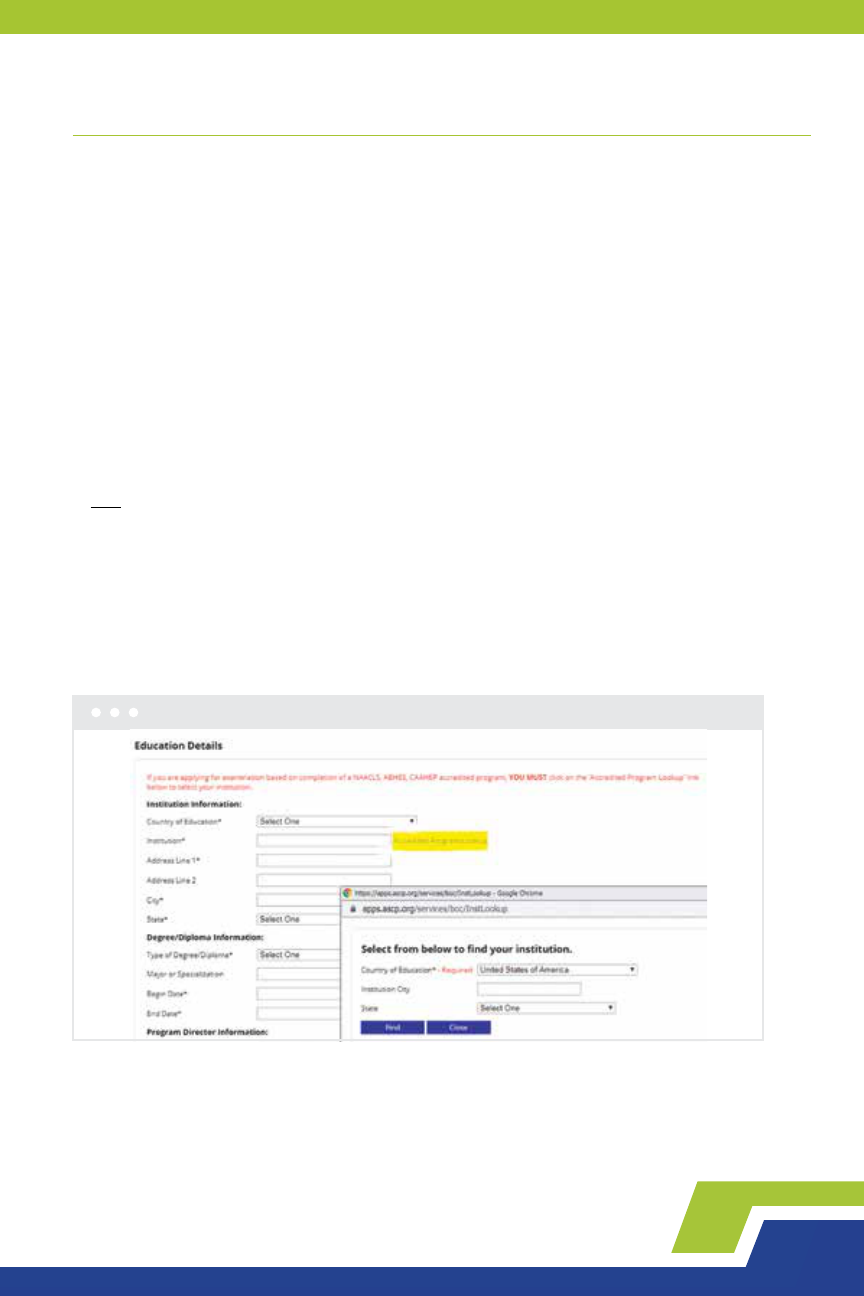
19
COMPLETING THE ONLINE APPLICATION
The ASCP BOC has created a video that walks applicants through the online application.
It can be found on our website at www.ascp.org/certification.
All applications must be completed online. Applicants can pay immediately by credit card
or follow the instructions to pay by check.
Your students will need the following information in order to complete the online application:
FIRST AND LAST NAME AS IT APPEARS ON THEIR VALID DRIVER’S LICENSE/VALID STATE ID
• If the rst and last names do not match the valid ID when the applicant appears at the
test center, he or she will not be permitted to take the examination. The applicant will be
required to reapply and submit a full application fee.
Detailed information on IDs are provided online under “Acceptable Forms of Identication”
at www.ascp.org/boc/test-center.
PERSONAL EMAIL ADDRESS
• ALL communication regarding a student’s application is sent via email. It is the student’s
responsibility to ensure that this email is updated in their ASCP record if necessary.
NAME OF THEIR NAACLS/CAAHEP/ABHES PROGRAM.
• This may be different than their clinical site.
• Students must choose their program from the accredited program lookup in the online
application. Students should not manually enter their program information as they will
then not appear on your EEV or PPR.
THE BEGINNING AND END DATES OF THEIR PROGRAM
• This program end date is not necessarily the same as their graduation date.
PROGRAM DIRECTOR’S NAME, PHONE NUMBER, AND EMAIL ADDRESS
PAYMENT INFORMATION

20
An application is not complete until payment has been received and processed by
the ASCP BOC. Credit card payments process overnight. Once a check has been
mailed, it may take up to 30 business days for payment to be processed.
PAY BY CREDIT CARD
Students may pay for their application by credit card when submitting their application.
If the institution wishes to pay for student applications by credit card, they would need
to do so for each student individually.
PAY BY CHECK
MULTIPLE APPLICATIONS WITH ONE CHECK
If you wish to pay the application fees for multiple students with one check:
Each student will need to:
• Complete an application online
• Print the Pay by Check invoice
As the Program Director, you will then need to:
• Collect invoices from students
• Submit one check and ALL invoices to
ASCP Board of Certication
3462 Eagle Way
Chicago, IL 60678
The ASCP BOC cannot hold funds for future applications. Any fees submitted without an
invoice will be returned to the institution. Purchase orders are not accepted for payment.
Training and/or work experience documentation forms should not be mailed with payment.
For complete information about submitting documentation forms, visit www.ascp.org/boc/
us-documentation.
Before the Examination

21
www.ascp.org/boc
Ofcial Transcripts
Official transcripts are required to verify that the academic requirements have been
met including high school graduation, college/university credits, and/or an appropriate
degree. If necessary, multiple transcripts may be submitted to verify that all educational
requirements have been met.
Students who have completed a NAACLS, CAAHEP, or ABHES accredited or approved
program are able to sit for the exam one time before an ofcial transcript has been
received in the ASCP BOC ofce. However, it is important to note that students will not
have access to their exam score, and are not certied, until their ofcial transcript has
been received and processed by the ASCP BOC ofce.
Students have up to one year after taking the examination to submit their ofcial transcript
to the ASCP BOC ofce. If, after one year, their ofcial transcript has not been received
and processed, their score will be invalidated. If they wish to be certied they would need
to submit a new application, including application fee and ofcial transcript, and take the
certication examination again.
Please remind your students to request an ofcial transcript be submitted to the ASCP
BOC. Students should allow at least 10 business days after receipt of the transcript for
notication to view their examination score.
OFFICIAL TRANSCRIPT REQUIREMENTS
• Date degree was conferred (if required)
• Seal of educational institution
• Signature of Registrar
At this time, all documentation is requested to be sent electronically. Please click here to
see the ASCP BOC COVID-19 page for complete information.
If your students are unable to submit transcripts electronically, they should mail them to
the address below. Please note that there will be an additional delay of 2 weeks in the
processing of all documents submitted by mail.
ASCP Board of Certication
33 West Monroe St., Suite 1600
Chicago, IL 60603
All documents, both mailed and electronic, are processed by the ASCP BOC in the order
that they are received.

22
www.ascp.org/boc
Before the Examination
ASCP BOARD OF CERTIFICATION STUDY GUIDES
• The BOC Study Guide for Clinical Laboratory Certication Exams, 6th edition, enhanced.
This study guide contains more than 2,000 multiple-choice questions presented in a
format that is similar to the actual ASCP BOC MLS and MLT certication examinations.
• BOC Study Guide: Histotechnology Examinations, 2nd edition
• BOC Study Guide: Phlebotomy, 2nd edition
SCHEDULING THEIR EXAM
Be sure to encourage your students to schedule their examinations as soon as they receive
their Admission Notication. If students call immediately after receiving their Admission
Notication, they should expect to schedule an exam date within 30 days of their eligibility
window begin date.
Due to COVID-19, scheduling availability may be heavily impacted. Please review the ASCP
BOC COVID-19 document regularly for the most up to date information.
RESCHEDULING AN EXAM
Any rescheduled exams must be within the original eligibility window noted on the student’s
Admission Notication. Students must contact Pearson VUE at least one full business day
(24 hours) prior to the date and time of their test to reschedule their exam.
If a student does not receive an email conrmation from Pearson VUE, they have not
successfully re-scheduled their exam.
Further information about scheduling and rescheduling appointments can be found at
www.ascp.org/boc/schedule-date.
You and your students can purchase a number of additional ASCP resources that
will help them prepare for the certication examination at www.ascp.org/boc/
study-resources, including:
Additional ASCP Resources

23
The ASCP provides resources to support students throughout the certication process.
ASCP BOC RESOURCES
The ASCP BOC provides specic content for each exam category at www.ascp.org/boc/
us-certications. These free resources include:
• Eligibility requirements
• Required documentation forms
• Reading lists of suggested material to prepare for the examination
• Examination content guidelines with an outline of topics covered on the examination
A video walk through of completing the online application can be found at www.ascp.org/
boc/certication.
EXAMINATION ELIGIBILITY ASSISTANT
To help applicants determine if they meet the eligibility requirements for an examination,
the ASCP BOC has developed the Examination Eligibility Assistant. While not necessary
for students who are completing an accredited/approved program, other applicants for
U.S. certifications may find it helpful.
After choosing a category of certification, and answering a set of Yes/No questions
about their education, training, and or/work experience, the Eligibility Assistant will help
potential applicants determine if they may be eligible for the certification exam they
selected. The ASCP BOC Examination Eligibility Assistant is based on U.S. education
only and can be found here: www.ascp.org/BOCEligibilityAssistant.
SOCIAL MEDIA
Follow the ASCP BOC Facebook page to follow the largest certication agency for
laboratory professionals. See FAQ’s, highlights of various certications, and timely
information throughout the week.
#BOCSTUDYGUIDE QUESTION OF THE WEEK ON FACEBOOK
The #BOCStudyGuide Question of the Week can help your students prepare for the
MLS and MLT exams. These practice questions from the BOC Study Guides test their
knowledge on various exam topics, and can aid them in identifying with which concepts
they are struggling so they can focus their studies more effectively. Watch the ASCP BOC
Facebook page weekly to see the new question.
Resources for Students
ONLINE PRACTICE TESTS
• The ASCP BOC MLS/MLT Interactive Practice Exam enables the user to build custom quizzes and timed practice
tests based on topics, difculty and more, pulling from a library of nearly 2,500 study questions built by ASCP. MLT
and MLS educators can purchase the interactive practice exams for your students and get access to advanced
reporting features, including comparative data across program averages (once a minimum participant threshold
has been met). Programs with more than ve students qualify to receive a 40% discount.
• Additional Online Practice Tests are available for the following categories: CT, PBT, MLT, MLS, HT, HTL, and
SC. Purchase includes a 90-day subscription to a package of ve to seven tests consisting of 50 unique
multiple choice questions. Program Directors can save 20 percent when you order 10 or more practice
tests. (Please note the last day to purchase MLT and MLS Online Practice Tests is February 1, 2021. The
last day to access these tests is June 30, 2021. After June 30, the tests will no longer be accessible.)
• For complete information, see www.ascp.org/boc/pd/tools-for-students.
MLS ONLINE REVIEW COURSE
• The MLS Online Review Course is a competency-based curriculum to help prepare your students
for the MLS examination. In addition to functioning as a concise review, covering the highlights of
the content areas on the MLS exam, the MLS Online Review Course can also help your students
determine when they are ready to take the exam.

24
After the Examination
EXAMINATION RESULTS
Immediately after completing the certification examination, your students will see their
preliminary results on the computer screen, indicated as “Pass” or “Fail.” Within four
business days, students will receive an email notification to log in to see their score
report if their transcript has been fully processed by the ASCP BOC.
Any student who takes the certication examination without submitting a nal academic
transcript at the time of application will not receive access to their score report. As Program
Director, encourage these students to submit their nal transcripts verifying completion
of the academic requirements within one year of their examination date. As a courtesy,
monthly email reminders will be sent to these students reminding them to submit their
ofcial transcript to the ASCP BOC ofce. If their transcript is not received within one year of
examination date, their examination scores will be invalidated and they will not be certied.
See page 21 for additional information about ofcial transcript requirements.
Students who have failed the exam are given subtest scores in order to help them
focus their studying. Subtest scores are not provided to students who passed the exam
because it does not serve a useful purpose, and we ask that you do not share this level
of information with them. For additional information about the PPR, and the sharing of
information, see pages 30-34.
WALL CERTIFICATE
Four to six weeks after they receive their score reports, students will receive a three-year,
time-limited wall certicate that includes their name, credential, and valid dates
of certication. See page 35 for further information on how to maintain certication.
SOCIAL MEDIA
PICTURES OF WALL CERTIFICATES, ETC.
Please inform your students not to post images of their wall certicates or ASCP BOC
documentation on social media. While we appreciate their enthusiasm and pride in
becoming certied, these images can be used by unscrupulous individuals to misrepresent
themselves as being certied. To protect the integrity of ASCP BOC credentials and
records, and for patient safety and welfare, it is important for individuals to protect their
certicates from misuse. Please share the following with your students:
• Do not share your wall certicate, score report, or ASCP Member ID card (if applicable)
with anyone
• Do not post a copy or image of your wall certicate, score report, or ASCP Member ID card
(if applicable) on the Internet or social media.
For complete information, visit www.ascp.org/boc/fraud.

25
www.ascp.org/boc
EXAMINATION INTEGRITY
Remind your students not to share any specific exam content, including recalled items
or answer choices, with anyone in any form. See page 16 for complete information.
VERIFICATION OF CERTIFICATION
If a student would like verification of their certification status sent to a third party, such
as a state licensing board or employer, they should wait until they have received their
score report. At that time, they may go online and request verification of certification be
sent to a third party. There is a fee for this service. See www.ascp.org/verification for
complete instructions.
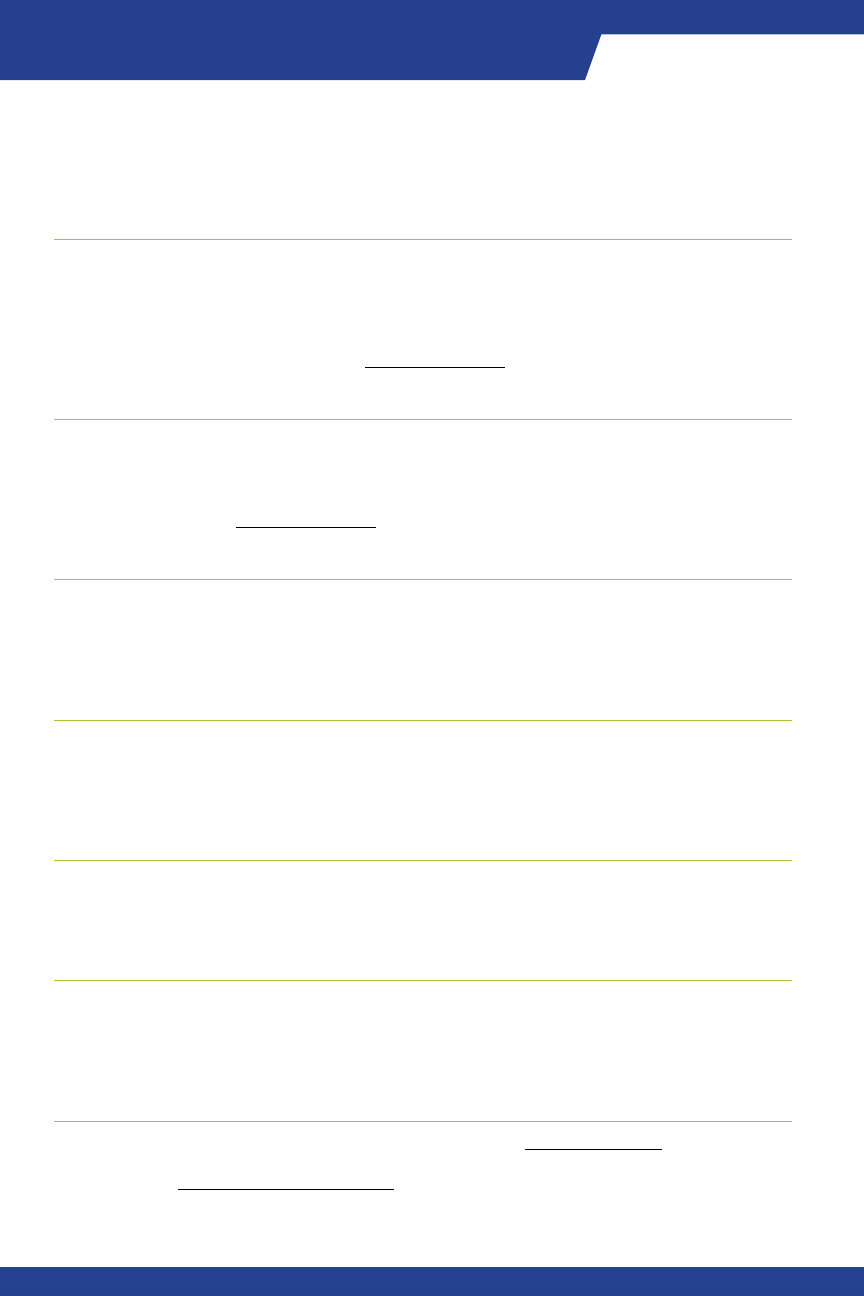
26
www.ascp.org/boc
Resources for Program Directors
The ASCP BOC provides resources to support you and your students throughout
the certication (and CMP) process. A video for Program Directors can be found at
www.ascp.org/boc/program_directors.
ONLINE EDUCATION RESOURCES AVAILABLE
The ASCP BOC has compiled a list of educational resources from a number of different
social media channels. These resources are being brought to US and Canadian Program
Directors and Educators to help support programs and students during the transition to
distance education. This material is for informational purposes only and does not constitute
an endorsement by the ASCP Board of Certication. If you have additions or corrections to
this resource list, please contact us at [email protected].
REVIEW THE ONLINE APPLICATION
We invite you to review the online application in order to better answer questions from your
students. Login to your ASCP account to apply, just don’t submit payment information.
Take screenshots to share with students and highlight any potential difculties. Once saved,
your application will remain in your account for six months. If you need assistance or have
questions, email us at [email protected].
ASCP BOC PROGRAM DIRECTOR’S GROUP ON FACEBOOK
Join the ASCP BOC Program Director’s Group on Facebook. This group is for directors
of NAACLS, CAAHEP, and ABHES accredited or approved laboratory programs whose
students seek ASCP certication. This peer-based group can answer any of your
certication related questions.
PROGRAM DIRECTOR’S SECTION OF THE WEBSITE
The ASCP BOC website includes pages that are dedicated to you, the Program Director.
You can nd information about online practice tests and study guides, the EEV and PPR,
the Program Director’s Guide to Certication e-book, and much more at www.ascp.org/
boc/pd/resources.
ASCP BOC NEWSLETTER
Published three times per year (Spring, Summer, and Winter), the ASCP BOC Newsletter
provides in-depth articles, detailed annual reports on ASCP BOC activities, staff spotlights,
examination statistics, and more at www.ascp.org/boc/newsletter.
eLINKS
eLinks is an electronic newsletter geared towards keeping you up to date on the ASCP
BOC activities that affect you and your students. Emails are sent to all Program Directors
and Program Coordinators in our database ve times a year. To access previous editions
of eLinks, visit www.ascp.org/boc/pd/resources.
CONTACT US
If you have questions about certication, please email us at [email protected]. For questions
about International certication, please email Angela Sreckovic, Manager, International
Certication, at [email protected].
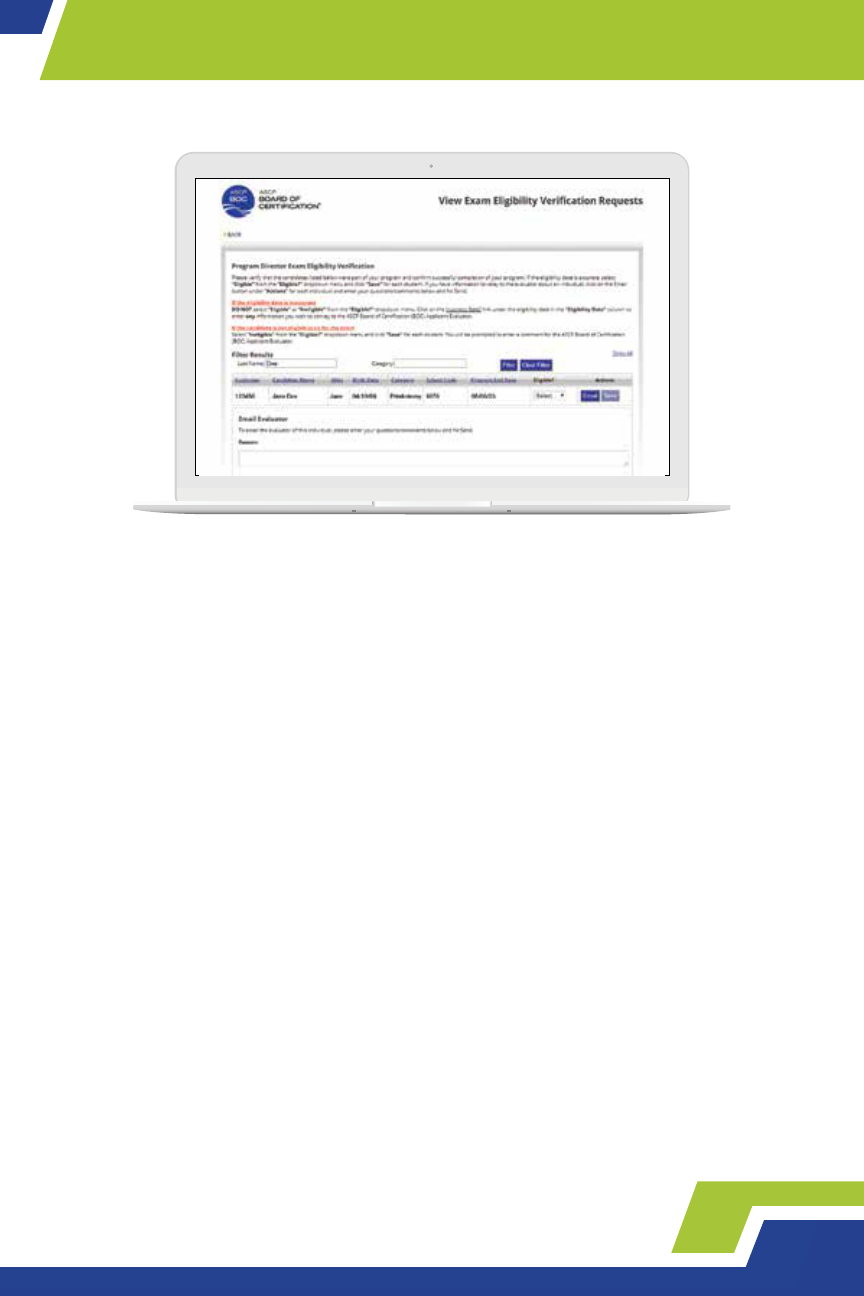
27
The Examination Eligibility Verication Report (EEV)
The Exam Eligibility Verication Report (EEV) is a tool for Program Directors of
NAACLS, CAAHEP and ABHES accredited/approved programs. The EEV provides
an up-to-date listing of students whose applications have been processed and are
awaiting verication of their eligibility to sit for the exam. You will be required to verify
their successful completion of all components of your program before they can
schedule their examination date.
You will receive an initial email notication each time a student’s application has
been processed and they are marked “Eligible;” they will now appear on your EEV.
These emails will prompt you to sign into your ASCP account to review the EEV
report. Reminder emails are sent every Sunday as well; you will only receive a
reminder email if you have students that are still awaiting verication. Please note
that you can log in at any time to sign o on student eligibility.
You are encouraged to wait to sign o on a student’s eligibility until you are sure
that they will complete all requirements of the program by the date indicated.
A students’ window in which to schedule their exam begins after their program
completion is veried through the EEV. If applying before their program is complete,
your students’ 90-day eligibility window will begin a day after the program
completion date veried on the EEV.

28
The Examination Eligibility Verication Report (EEV)
ACCESSING YOUR EEV REPORT
1. Login to your ASCP account at www.ascp.org/login.
2. Under “Management Tools” choose “Exam Eligibility Verication”.
Please note that you will only see this option if you have students currently waiting to be veried.
3. Click the top link to view pending exam eligibility requests.
4. If you only see an option to view EEV archives, there are no pending requests.
COMPLETING AN EEV REPORT
Applications are processed individually, not as school groups; therefore, not all of your
students will appear on the EEV at the same time.
REVIEW THE EEV REPORT FOR EACH STUDENT FOR ACCURACY:
• student’s full name
• certication category
• date of program completion
IF ALL INFORMATION IS ACCURATE, SELECT “ELIGIBLE”.
FOLLOW THE INSTRUCTIONS TO SEND AN EMAIL TO THE ASCP BOC IF:
• a particular student is not listed.
• you do not recognize a student listed.
IMPORTANT: Do not mark the student as “Ineligible” as this will delete
the student’s application.
IF YOU SEE A STUDENT’S NAME FROM A PREVIOUS CLASS on your EEV, proceed with the
standard review process. Students from accredited/approved programs are eligible for
examination for up to ve years after program completion.
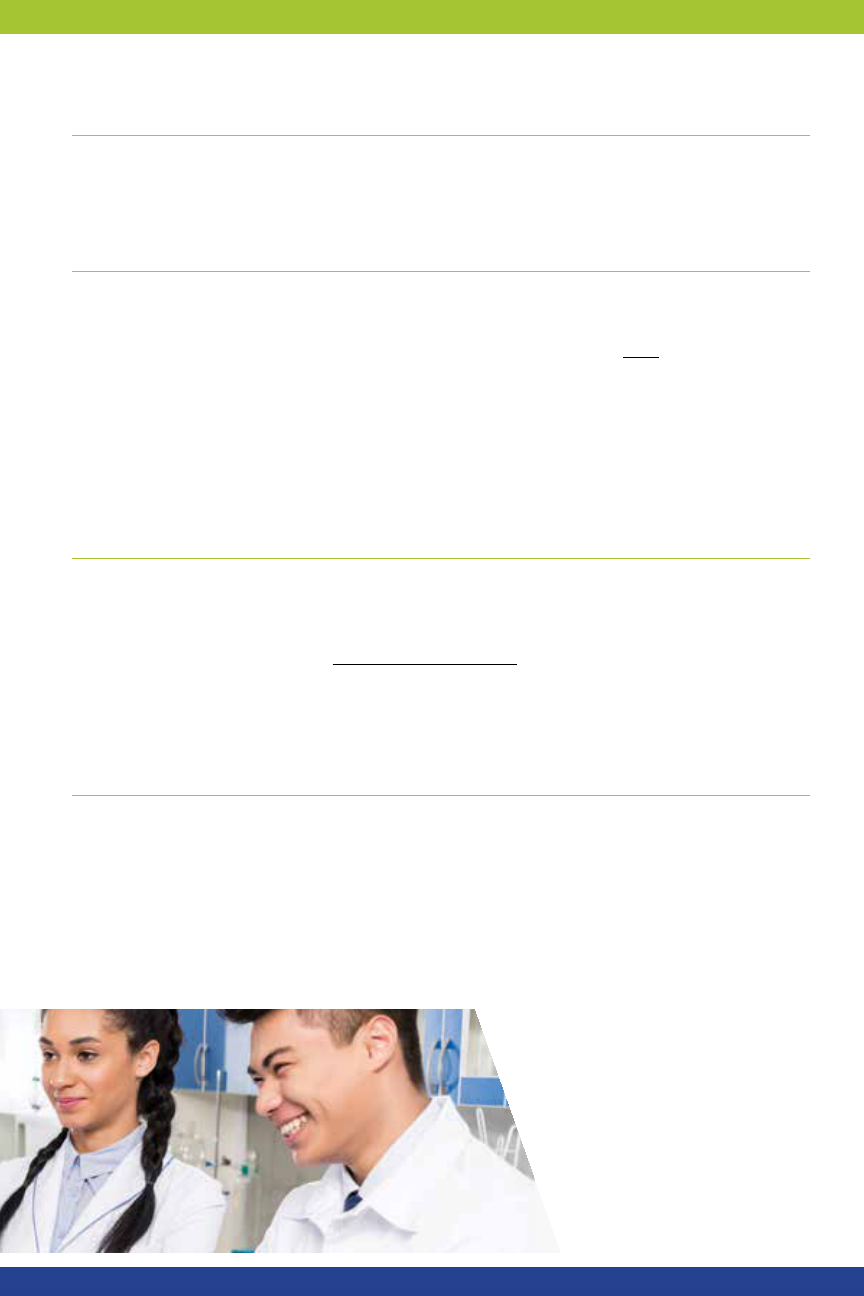
29
www.ascp.org/boc
DATE OF PROGRAM COMPLETION VS. GRADUATION DATE
Before your students apply, please ensure that they know the date of your program’s
completion as this may not be the same as their actual graduation date. Students should
enter their program completion date on the online application.
INCORRECT PROGRAM END DATE
If the program end date is incorrect, do not select anything from the dropdown menu.
Click on “Incorrect Date?” to send an email with the correct information to the ASCP BOC.
• If the program end date entered by the student is up to one week after their actual end
date, do not request that it be changed.
• If you have submitted a change in program completion date to the ASCP BOC, allow up
to 5 business days for the change to be made.
You will need to log back in to the EEV to verify the corrected date. Please note that you
will not receive an email to alert you when the program end date has been updated by
ASCP BOC staff.
STUDENTS WHO WILL NOT COMPLETE A PROGRAM
• Notify the ASCP BOC immediately about any student on the EEV who will not complete
your program or degree requirements by the date indicated.
• If you have already submitted the EEV, contact Angela Nunn, Assistant Manager
of Certication Processing, at [email protected] as soon as possible.
• The student will be notied by email that he or she is ineligible.
• If the student completes the required coursework at a later date, they must submit
a new application and application fee.
EEV ARCHIVE
Archived reports list students in chronological order by program end date.
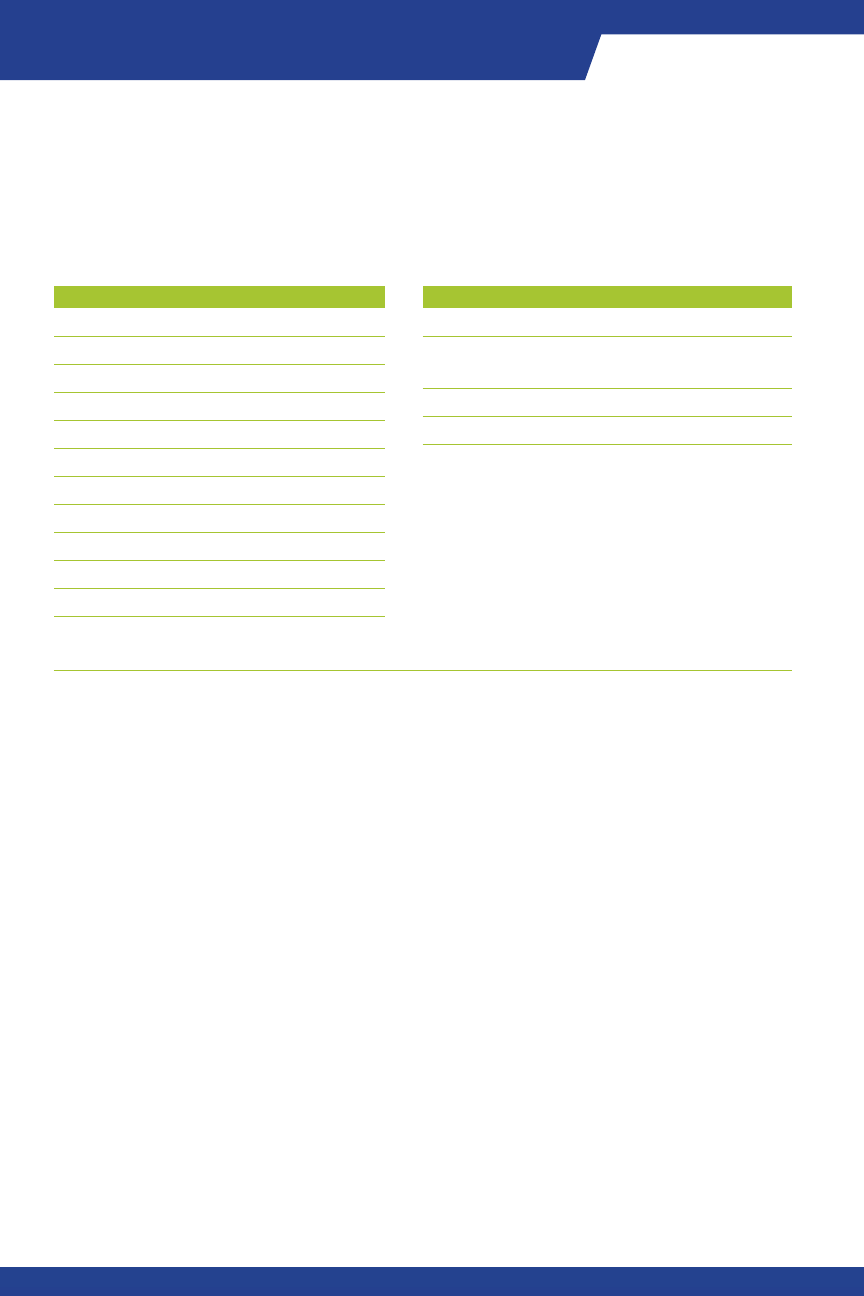
30
www.ascp.org/boc
Program Performance Reports (PPR)
PPR AVAILABLE FOR:
Technologist in Cytogenetics (CG)
Cytotechnologist (CT)
Histotechnician (HT)
Histotechnologist (HTL)
Medical Laboratory Assistant (MLA)
Medical Laboratory Scientist (MLS)
Medical Laboratory Technician (MLT)
Technologist in Molecular Biology (MB)
Pathologists’ Assistant (PA)
Phlebotomy Technician (PBT)
Specialist in Blood Banking (SBB)
PPR INCLUDES:
First time individual student scaled scores
Program and National scaled
score comparisons
Repeat individual student scaled scores
Distribution of examinee scaled scores
The Program Performance Report (PPR) is an optional paid service that allows
you to view and download your students’ certication examination scores. You
can also access program and national scaled score comparisons and subtest
mean scaled scores, as well as archives of reports. Information can also be found
online at www.ascp.org/boc/pd/ppr.
PPR INFORMATION
Properly designed and developed certication examinations identify and classify candidates
into a classication of competent or not competent. Certication bodies are not concerned
with how candidates perform relative to one another but rather how the candidates
perform relative to the minimum passing score. Examination scores should not be used for
alternative purposes other than determining minimum competency.
All examination scores are reported in scaled score. A scaled score is mathematically
derived (in part) from the raw score (number of correctly answered questions) and the
difculty level of the questions. Because each examinee has taken a different form of the
examination, scaled scores are used so that tests may be compared on the same scale.
The minimum passing score is 400. The highest attainable score is 999. See pages 14 - 15
for additional information about ASCP BOC examinations.
The PPR is updated daily. Student scores will appear on your PPR 10 business days after
their exam date. It is important to note that students have the right to request their exam
score not be released. If that is the case, the student’s individual scores will not be listed on
your PPR; however, their scores will be included in your overall program information.
Passing an ASCP BOC certication exam shows that a student possesses the essential
knowledge and skills necessary for competent practice in a particular eld. We thank you
for your cooperation in keeping individual records condential.

31
PAY BY CREDIT CARD
• Login to your ASCP account
• Under “Management Tools” choose
“View PPR Invoice Order”
• Follow the online instructions OR
• Call ASCP Customer Relations
at (800) 267-2727
PAY BY PAPER CHECK
• Login to your ASCP account
• Under “Management Tools” choose
“View PPR Invoice Order”
• Print the PPR invoice
• Submit a check with the invoice to:
ASCP Board of Certication
3462 Eagle Way
Chicago, IL 60678
PAYING ELECTRONICALLY (ELECTRONIC CHECK, WIRE TRANSFER, ETC.)
If your Accounts Payable Department will be submitting payment electronically, please
work with them to ensure that the order number is included with the electronic payment.
You can help guarantee that your payment is applied to the correct order by sending an
email to [email protected] with:
• the date the electronic payment was sent
• the name that appears as the sender
• tracking details
• any other identifying information.
Not following the procedures as noted above will result in significant processing delays,
during which time you will not have access to PPR data. Faxed payments and purchase
orders are not accepted.
PAYING FOR THE PPR
The Program Performance Report is an annual subscription service. The fee for the 2021
PPR is $150 per program; if you oversee multiple programs, you will have multiple invoices.
If you do not purchase the 2021 PPR by January 1, 2021, you will not have access to any
PPR data beginning January 1. Paying prior to January 1, 2021, will ensure uninterrupted
PPR access. By paying the current year’s invoice, access is provided to all current and
previous PPR data for the full calendar year.
Program Directors will receive an email notification with a link to their PPR invoice(s) each
fall for the following year. If you do not receive an email notication by November 15th,
login to your ASCP account to view your invoice. If you are unable to access your invoice
online, need a PDF copy of your invoice, or need the invoice sent to someone other than
the Program Director, please contact us at [email protected].
Please note: Credit card payments process overnight. Once a check has been
mailed, it may take up to 30 business days for payment to be processed.
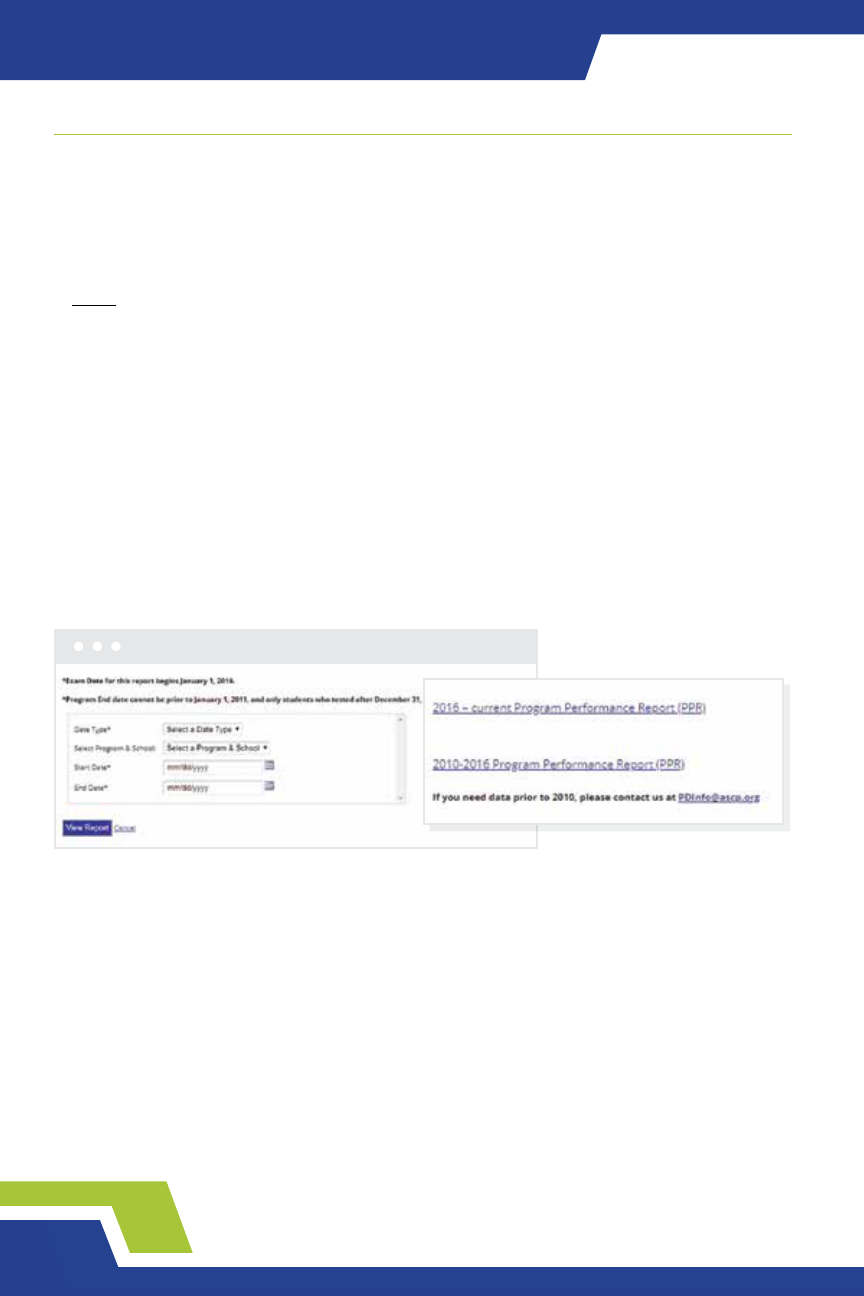
32
ACCESSING YOUR PPR
You will not have access to any PPR data unless the current year’s invoice has been paid.
If you have not paid your annual subscription fee, you will see a “View PPR Invoice Order”
link under the “Management Tools” section of your dashboard. If you do not see this link
when you log in, then your invoice has been paid and fully processed.
TO ACCESS YOUR PPR
• Login to your ASCP account
• Choose “Program Performance Report” under “Management Tools”
• Choose current or prior reports (2016 – current OR 2010 – 2016)
• Select Program and School
• Customize date ranges
• Click “View Report”
PPR FEATURES
If you are a Program Director of multiple programs, you will rst choose the program
for which you want to see data. Next, choose from one of the two links:
• 2010 – 2016 Program Performance Report (PPR)
» Data is provided in static six month and annual cycles
» Data is organized by exam date
• 2016 – current Program Performance Report (PPR)
» Choose your date range from Jan 1, 2016 - current
» Choose to see results by exam date or program end date
• If you search by Program End Date, you will only see your specic program’s
information; national information will not be provided
If you want to change programs or date ranges, click on the “Go to Program Performance
Report (PPR)” link in the top right corner of the PPR page. This will bring you back to the
selection screen.
Program Performance Reports (PPR)

33
www.ascp.org/boc
SHARING PPR INFORMATION
SHARING PPR INFORMATION WITH THE PUBLIC
The Program Performance Report is a paid subscription service meant for use by Program
Directors and Program Administrators only; specic data from the PPR is not to be shared
with the public. The information contained in the PPR should be handled in a condential
manner which respects the rights of the individual whose scores are reported. Individual
student data, subtest means, and the histogram are not public information and it is
inappropriate to publicize this data in recruitment efforts.
Any data that is shared must be anonymized. Program Directors can share overall program
pass rates and program scaled score comparisons as an outcomes measure for accreditation
purposes. This information is contained within the “Program and National Scaled Score
Comparisons” section of the PPR.
SHARING PPR INFORMATION WITH STUDENTS
Students should not need to ask you for their exam score as all examinees are provided
access to their score report electronically within four business days of testing, unless
they have not yet met all eligibility requirements. A student who has passed the exam,
but whose ofcial transcript has not been received by the ASCP BOC ofce, will not have
access to their score report and is not yet certied. It is important to note that this
student’s exam score will still appear on your PPR 10 business days after they have taken
the exam. See page 21 for complete information about ofcial transcripts.
In many Board exams, no scores are given; candidates receive only a statement of
Pass or Fail. The goal of a certication program is to identify individuals who achieve the
predetermined level of competency. The purpose of ASCP BOC certication exams is not
for individuals to compare or rank themselves or their program.
The ASCP BOC provides subtest scores to Program Directors to help them get an overall
sense of how their students are doing by discipline. Students who have failed the exam
are given subtest scores in order to help them focus their studying. Subtest scores are not
provided to students who passed the exam because it does not serve a useful purpose,
and we ask that you do not share this level of information with them.
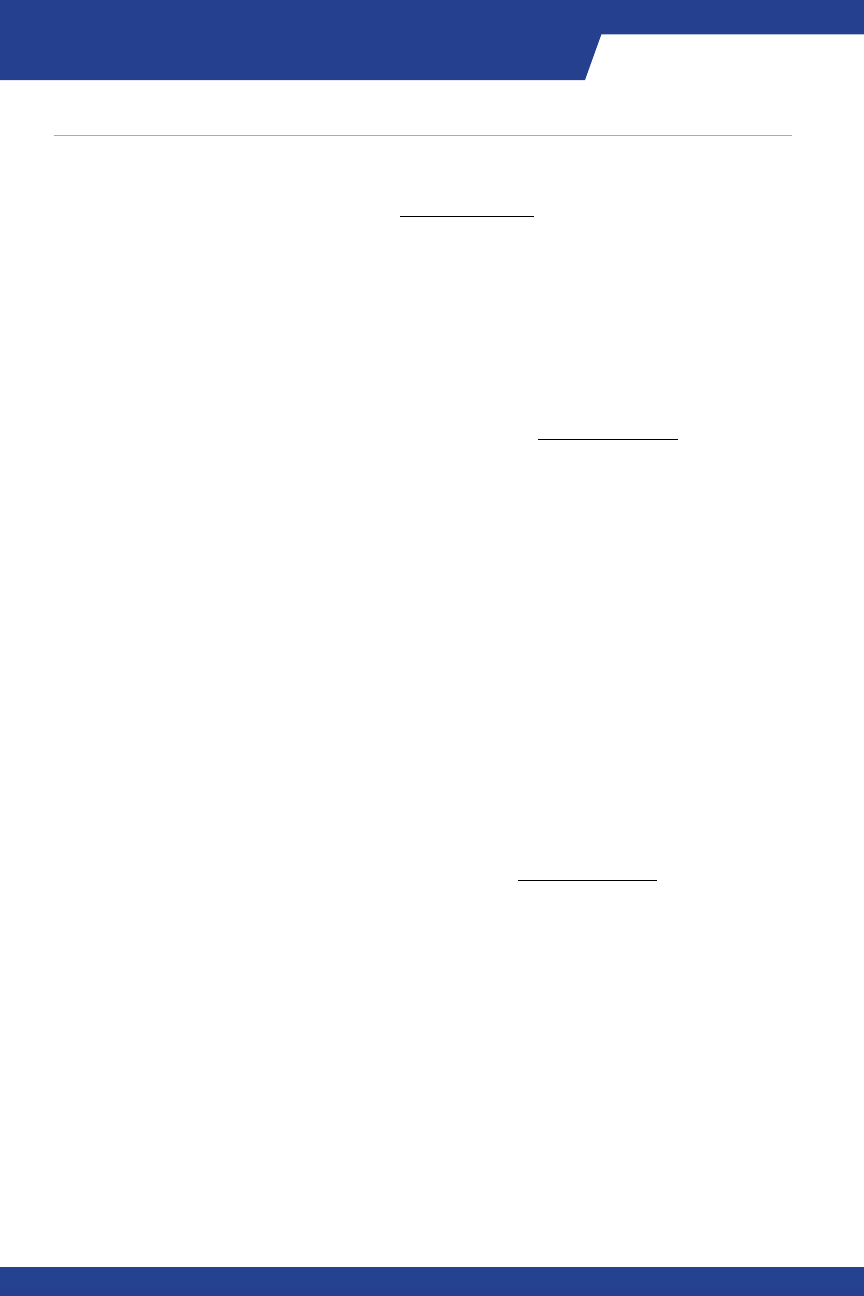
34
www.ascp.org/boc
ADDITIONAL PPR INFORMATION
PROVIDING ADDITIONAL USERS ACCESS TO THE PPR
If there is a faculty member, an Education Coordinator, or someone else who should also have
access to the PPR information, please email [email protected] with the following:
• name of the institution
• category of program and six-digit school code (MLS-123456)
• name and email address of individuals who should have access
Please note that the Program Director will remain the only person able to access the Exam
Eligibility Verication (EEV) to verify students’ completion of the program and the annual
PPR invoice.
COMMON ACCESS OR DATA ISSUES
For any issues, including those listed below, please contact [email protected]. All inquiries
will receive a response in 3 – 5 business days.
• Incorrect student information, including if a student is not listed or you do not recognize
a student’s name.
» It is important to note that students have the right to request their exam score not be
released. If that is the case, the student’s individual scores will not be listed on your
PPR. However, their scores will be included in your overall program information.
• Access to program data prior to 2010.
» Include your program type, school code, and the date range of the data requested. If you
have paid for the current PPR invoice you will receive a PDF of the requested information.
• Access to previous years’ data for programs that have closed.
» Please include a brief explanation and include your program type, school code, and
the date range of the data requested.
SAVING/DOWNLOADING PPR DATA
You can save the entire PPR document as a PDF. Once the data is saved as a PDF, you have
the ability to export the data into a spreadsheet.
The steps are different depending on the Internet browser you are using. For assistance
with downloading or saving PPR data, please email us at [email protected].
You may want to save a copy of your PPR data near the end of the year to have on hand
while payment is processing.
HT/HTL PROGRAMS
Students who graduate from an HT program can take the HTL examination if they meet
the academic requirements. Therefore, if you are a Program Director of either an HT or HTL
program, your PPR will have an option to see data for both of these programs. You will only
need to pay one invoice for access to both HT and HTL student scores.
Program Performance Reports (PPR)

35
CREDENTIAL MAINTENANCE PROGRAM (CMP)
ASCP Board of Certication (BOC) credentials represent the highest standards for quality
and continued competency. In keeping with the commitment to ongoing prociency, the
ASCP BOC developed the Credential Maintenance Program (CMP). In addition to helping you
maintain your professional certication, the CMP can help you stay current on developments
in your eld and provide opportunities for both professional and personal enrichment.
HOW CMP WORKS
The CMP requires the completion of continuing education (CE) activities within your
three-year certification cycle in order to maintain valid ASCP certification. Some of the
qualifying activities include employer offered courses, teleconferences/online courses,
competence assessment by your employer, and participating in formal continuing
education courses.
Candidates record and submit their completed CEs to the ASCP BOC through the online
CMP declaration form process. When your CMP application has been reviewed and
approved, your certification cycle is updated and valid for the next three-year period.
CMP RESOURCES FROM THE ASCP BOC
Please visit this link to access the following CMP resources: www.ascp.org/cmp.
• The Credential Maintenance Program (CMP) Booklet outlines specic program
requirements by category and provides suggested continuing education activities.
• The Credential Maintenance Program (CMP) Video provides an overview of the program
and guides the certicant through the online recertication process.
Maintaining Certication

36
At www.ascp.org/boc/military you will nd information specic to military
personnel regarding the payment of application fees, documentation required
to verify eligibility, and testing on military bases.
ELIGIBILITY
Provided they are in good standing, active military personnel enrolled in military laboratory
specialist courses and in NAACLS, CAAHEP, or ABHES accredited/approved training
programs can sit for the appropriate ASCP BOC certication examination within the last
three weeks of Phase II training.
TESTING LOCATIONS
Military personnel and their families can take ASCP BOC certication examinations at
military bases. To gain access to on-base military test centers, an examinee must have
both a valid government ID and authorization to enter the base. Make sure that your
students have proper authorization for access to the military base before scheduling their
exam. You can nd a site near you at www.pearsonvue.com/ascp.
EXAMINATION ELIGIBILITY VERIFICATION (EEV)
When you receive an email notication alerting you to review your program’s EEV report,
you should indicate whether your students are in good standing in the nal three weeks of
the training program by the date indicated. See pages 27-29 for complete EEV information.
Contact Angela Nunn, Assistant Manager of Certification Processing, at angela.nunn@
ascp.org immediately about any student who did not successfully complete your program
or degree requirements.
EXAMINATION RESULTS
Immediately after completing the certication examination, your students will see their
preliminary results on the computer screen, indicated as “Pass” or “Fail.” Within four
business days, students will receive an email notication to log in to see their score report
if they have successfully completed your program and their ofcial transcript has been fully
processed by the ASCP BOC.
Students who have completed NAACLS, CAAHEP, ABHES, or military laboratory specialist
programs are able to sit for the exam one time before an ofcial transcript has been received in
the ASCP BOC ofce. Any student who takes the certication examination without submitting
a nal academic transcript at the time of application will not receive access to their score
report. As Program Director, encourage these students to submit their nal transcripts verifying
completion of the academic requirements within one year of their examination date. As a
courtesy, monthly email reminders will be sent to these students reminding them to submit their
ofcial transcript to the ASCP BOC ofce. If their transcript is not received and processed within
one year of examination date, their examination score will be invalidated and they will not be
certied. See page 21 for additional information about ofcial transcript requirements.
Students who have failed the exam are given subtest scores in order to help them focus their
studying. Subtest scores are not provided to students who passed the
exam because it does not serve a useful purpose, and we ask that you
do not share this level of information with them. For additional information
about the PPR, and the sharing of information, see pages 30-34.
Military Laboratory Training Programs

37
www.ascp.org/boc
International Programs
In addition to maintaining high professional standards in the United States to
ensure the highest level of patient safety, the ASCP BOC also recognizes the
need for a global standard of excellence in laboratory practice. To that end, the
ASCP BOC has established an international certication credential (ASCP
i
) for
laboratory professionals worldwide. For further information, see www.ascp.org/
international.
In addition to certication, the ASCP BOC oers networking opportunities and
other services to countries seeking to strengthen their clinical laboratories and
clinical laboratory programs. It is recognized that many international academic
programs mirror those of programs in the U.S. If you have questions about
international programs or international certication please contact Angela
Sreckovic, Manager, International Certication & CA Technical Operations, at

38
Notes
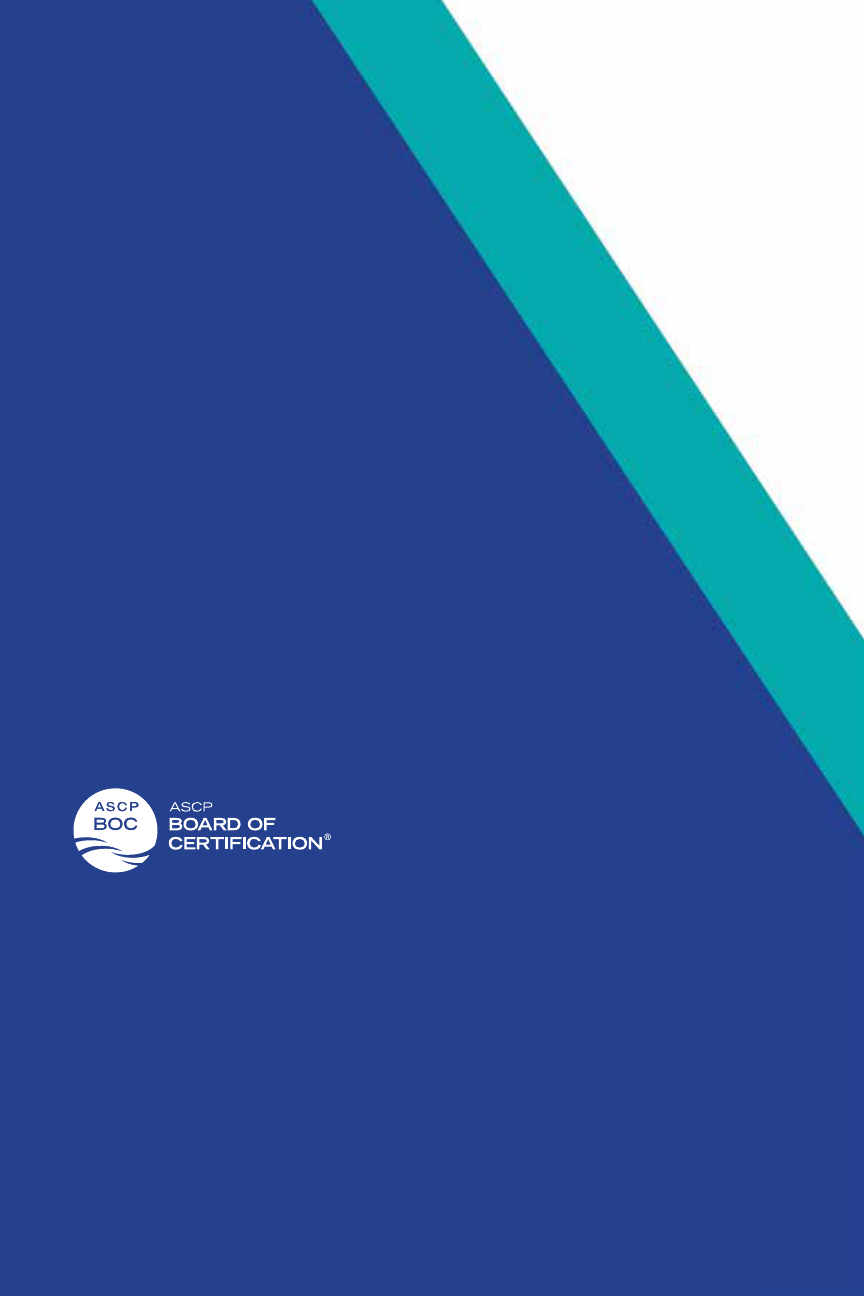
The mission of the ASCP Board of
Certication (BOC) is to provide excellence
in certication of laboratory professionals
on behalf of patients worldwide.
33 West Monroe Street, Suite 1600 Chicago, IL 60603 3_190073_LS
www.ascp.org/boc

